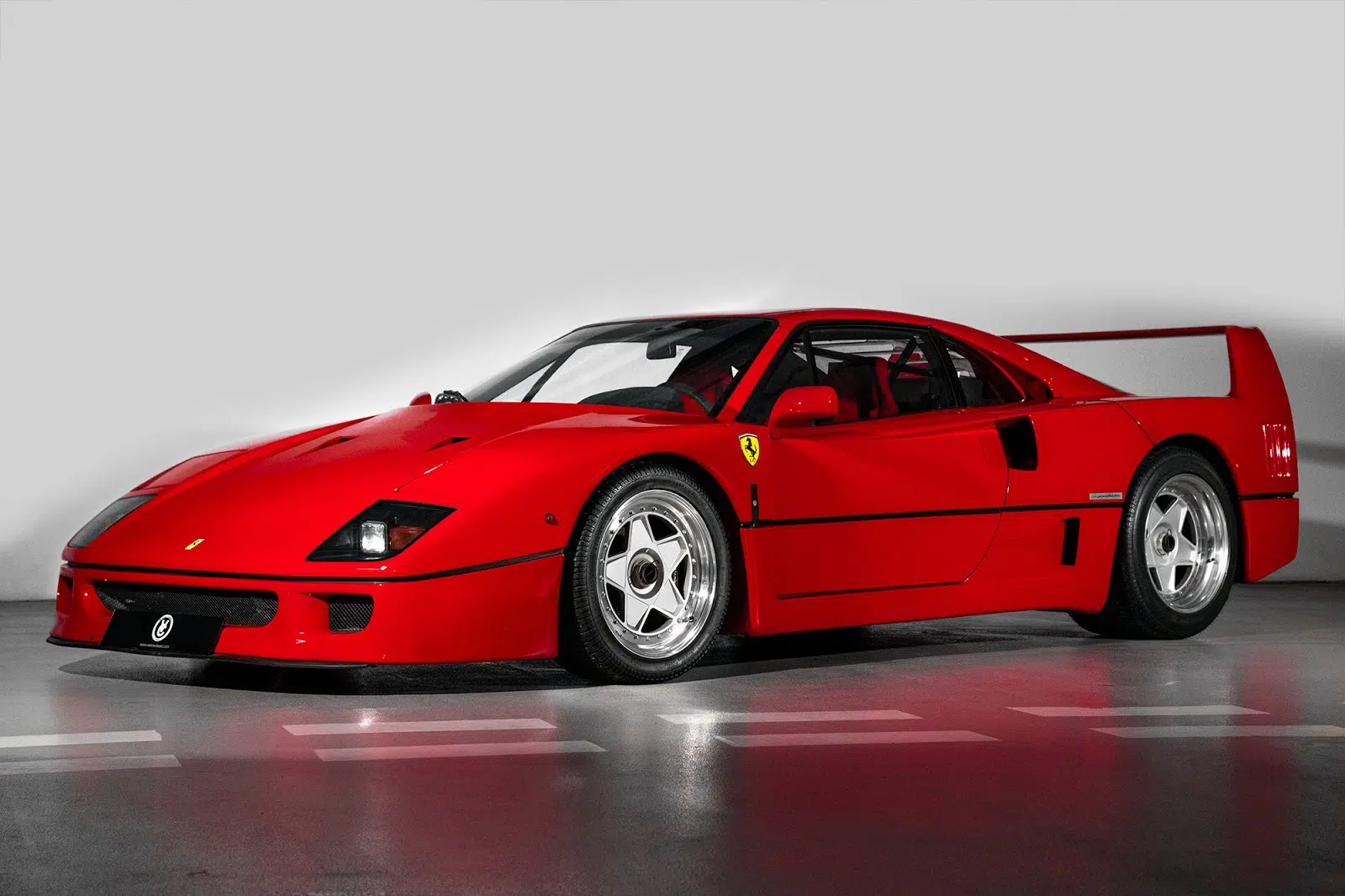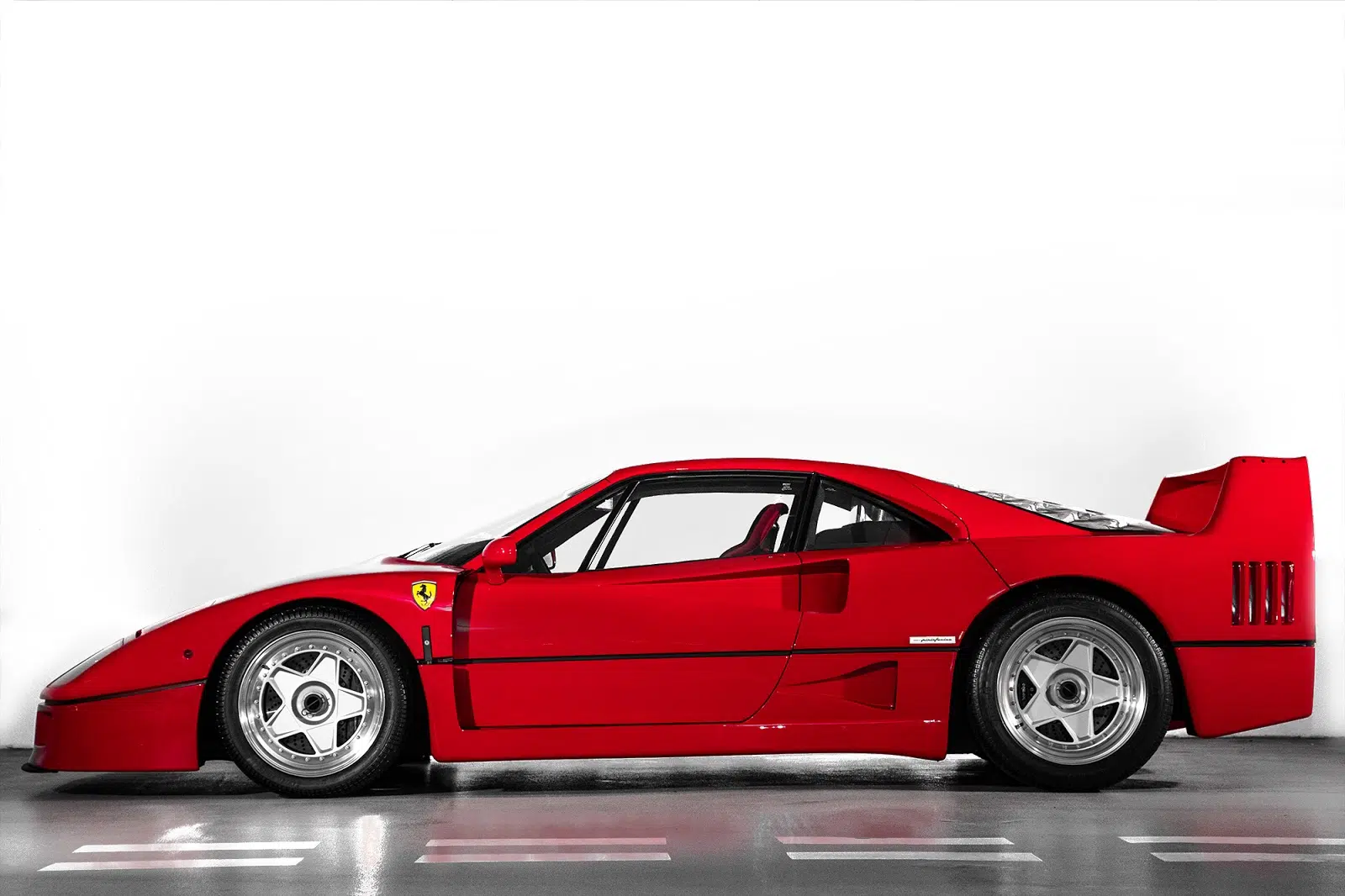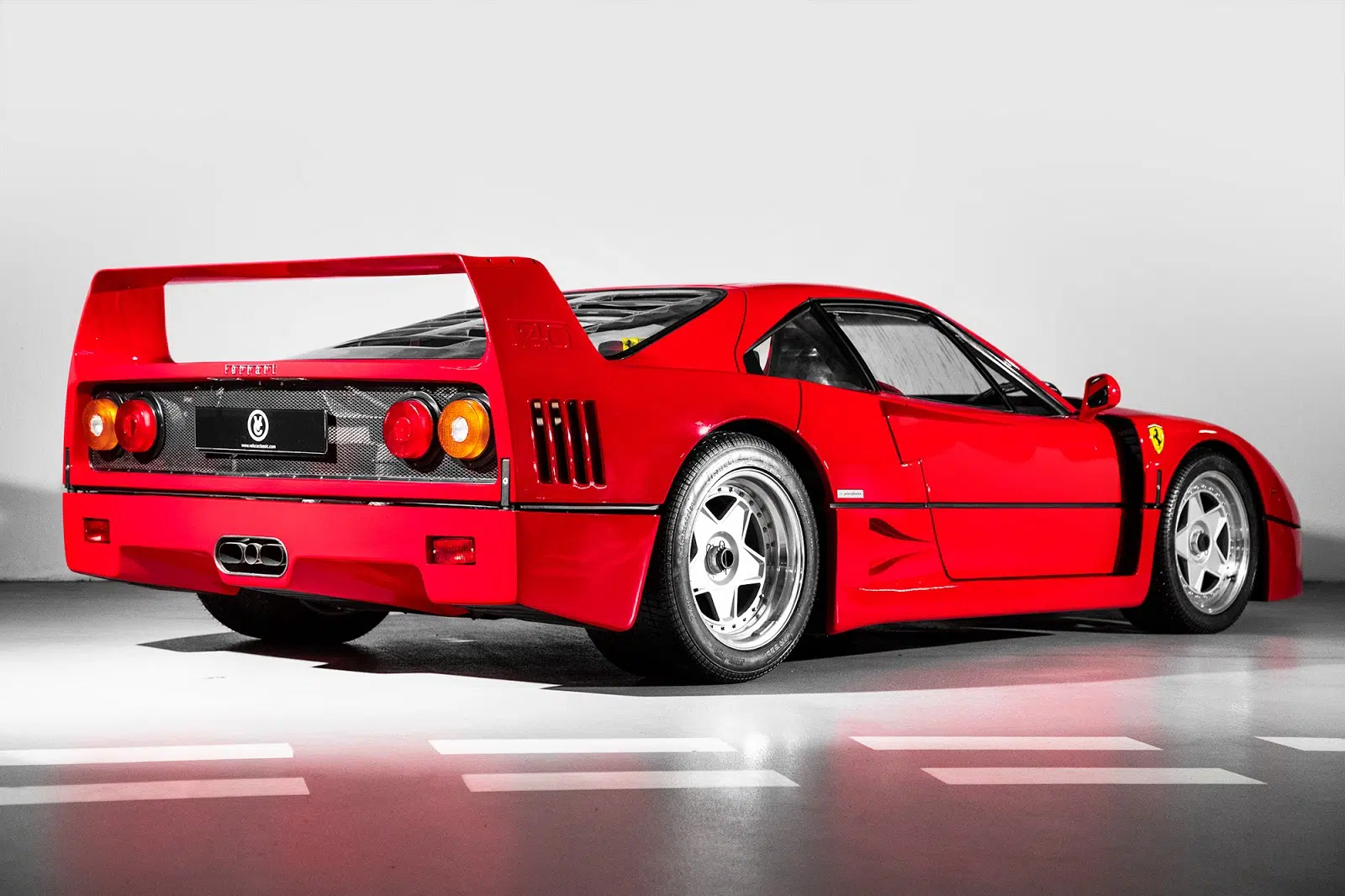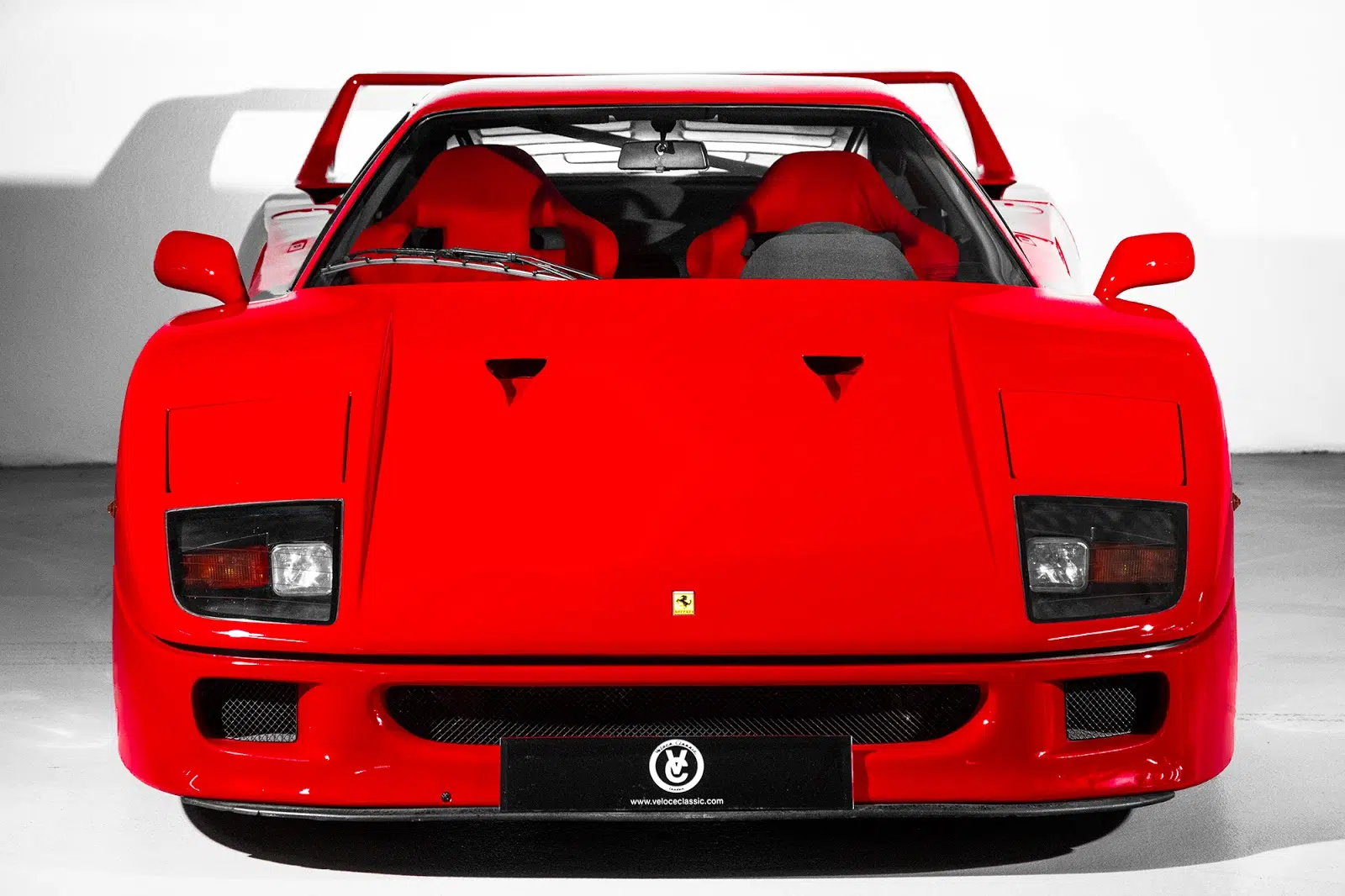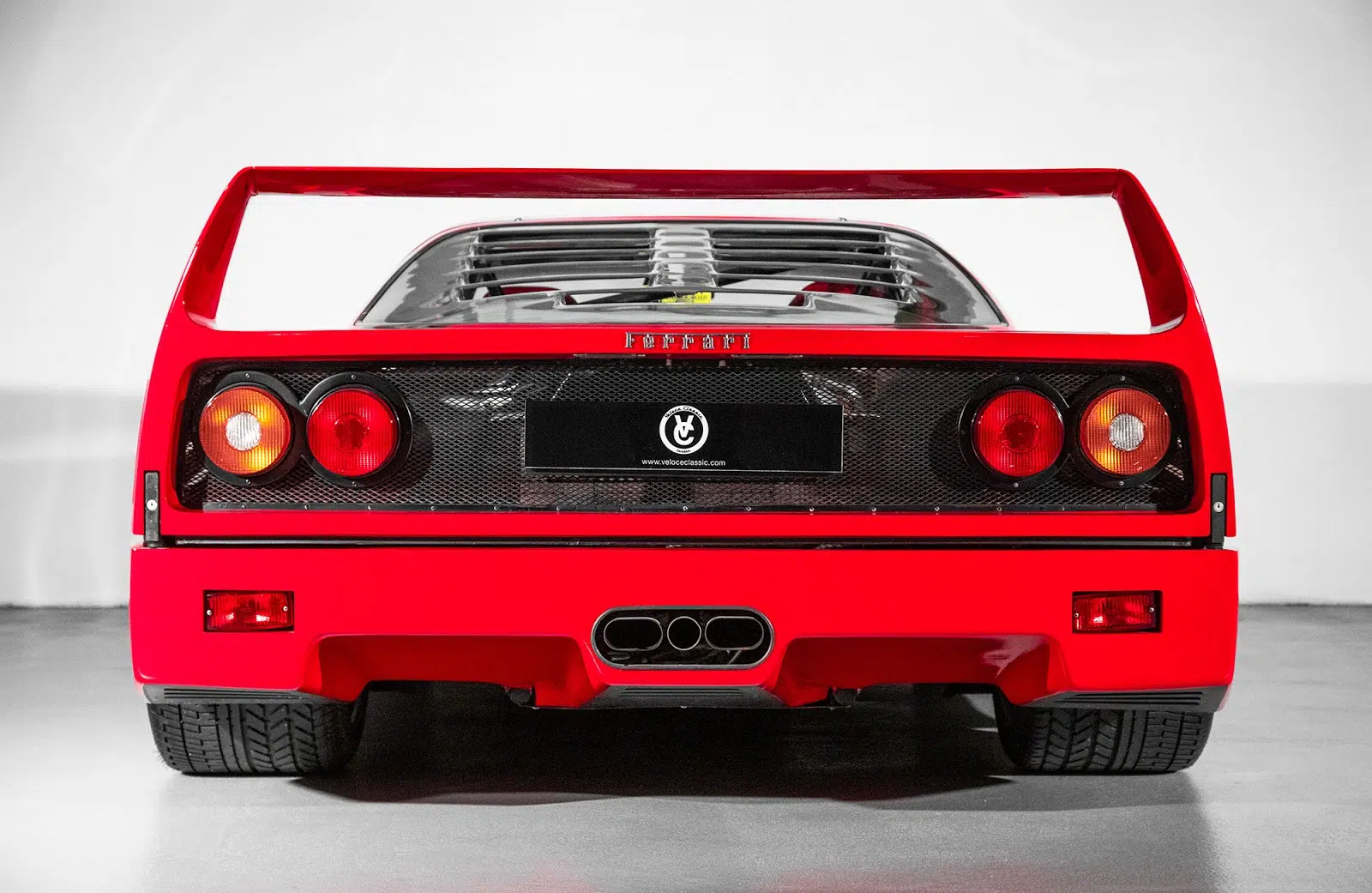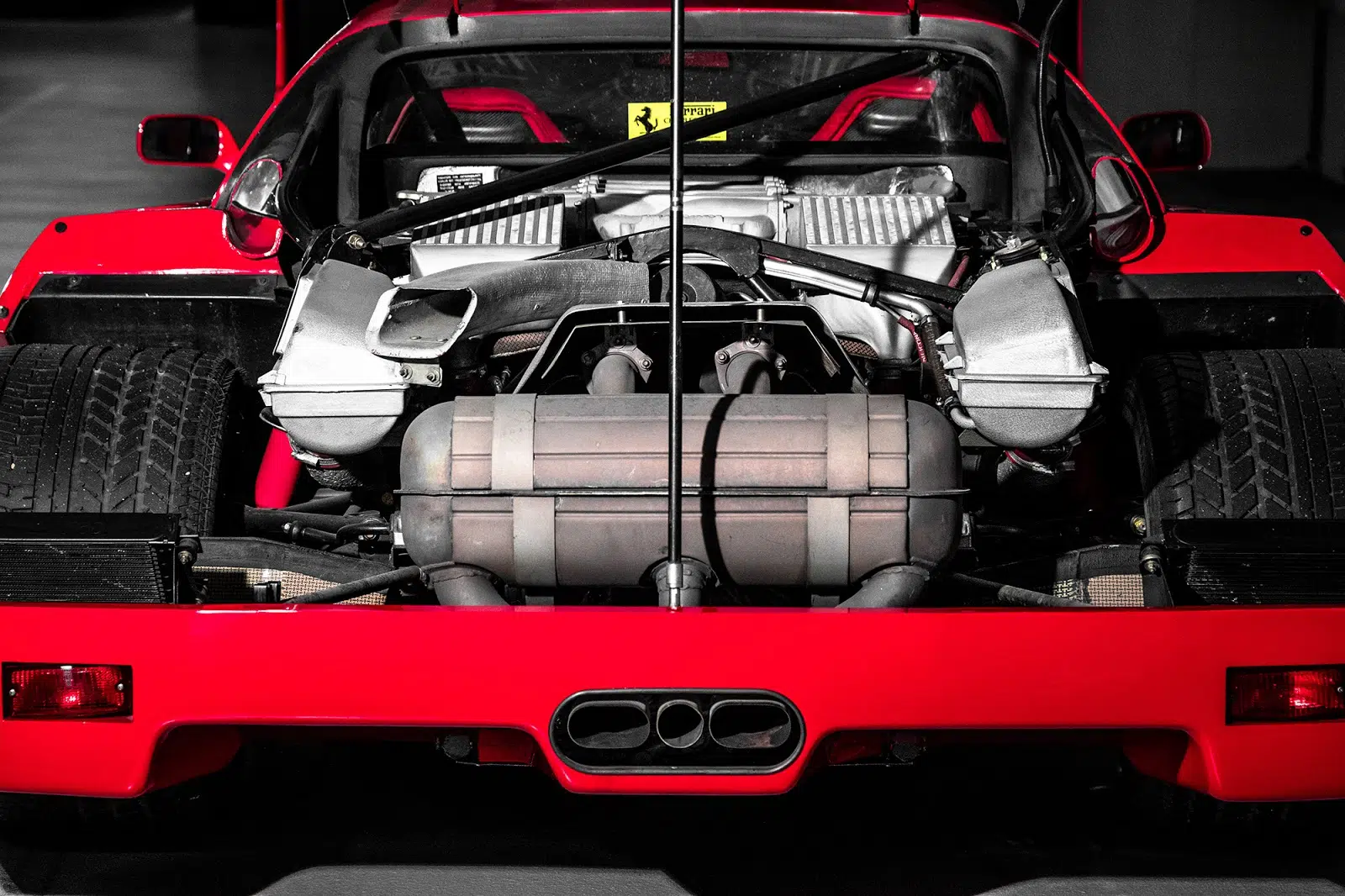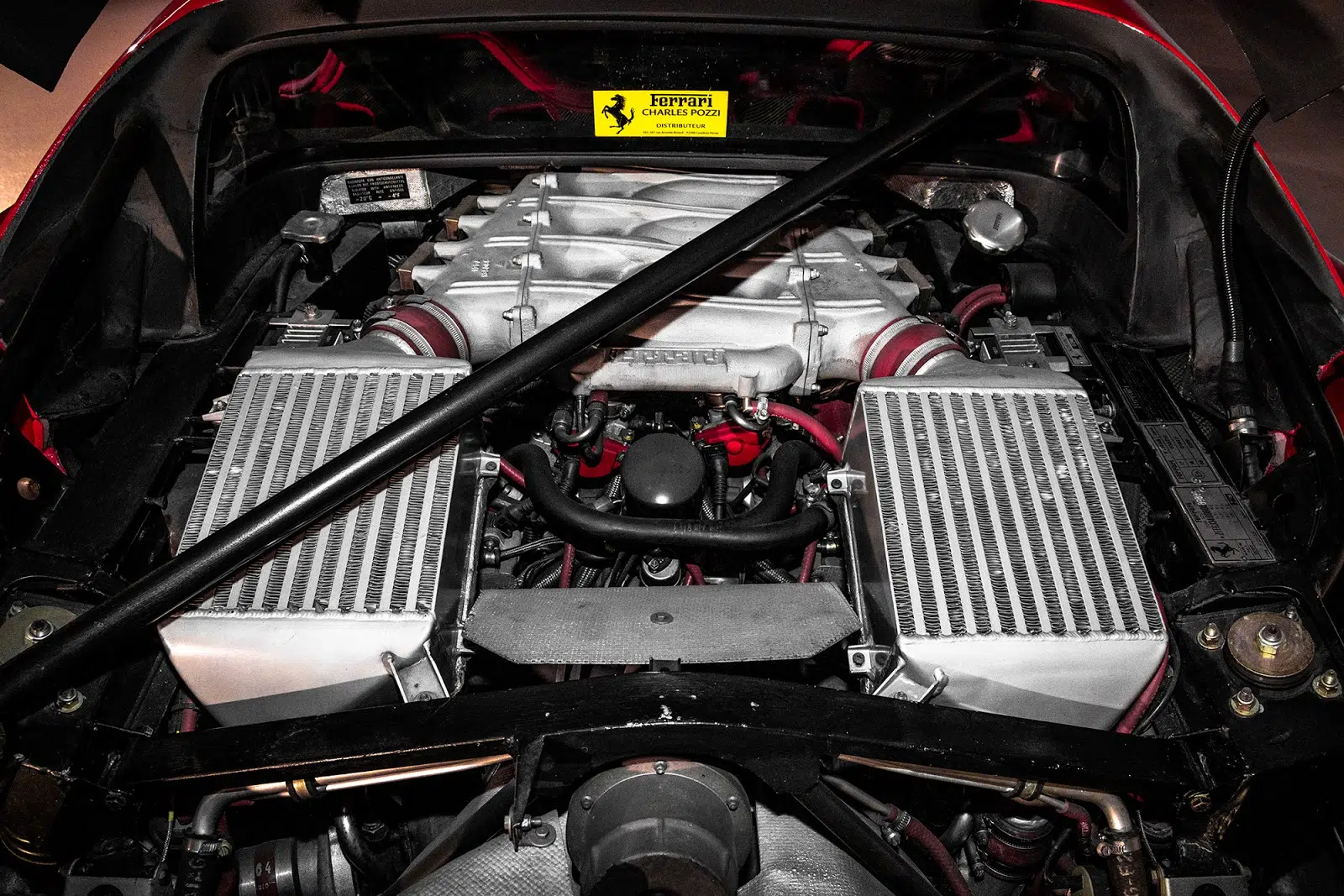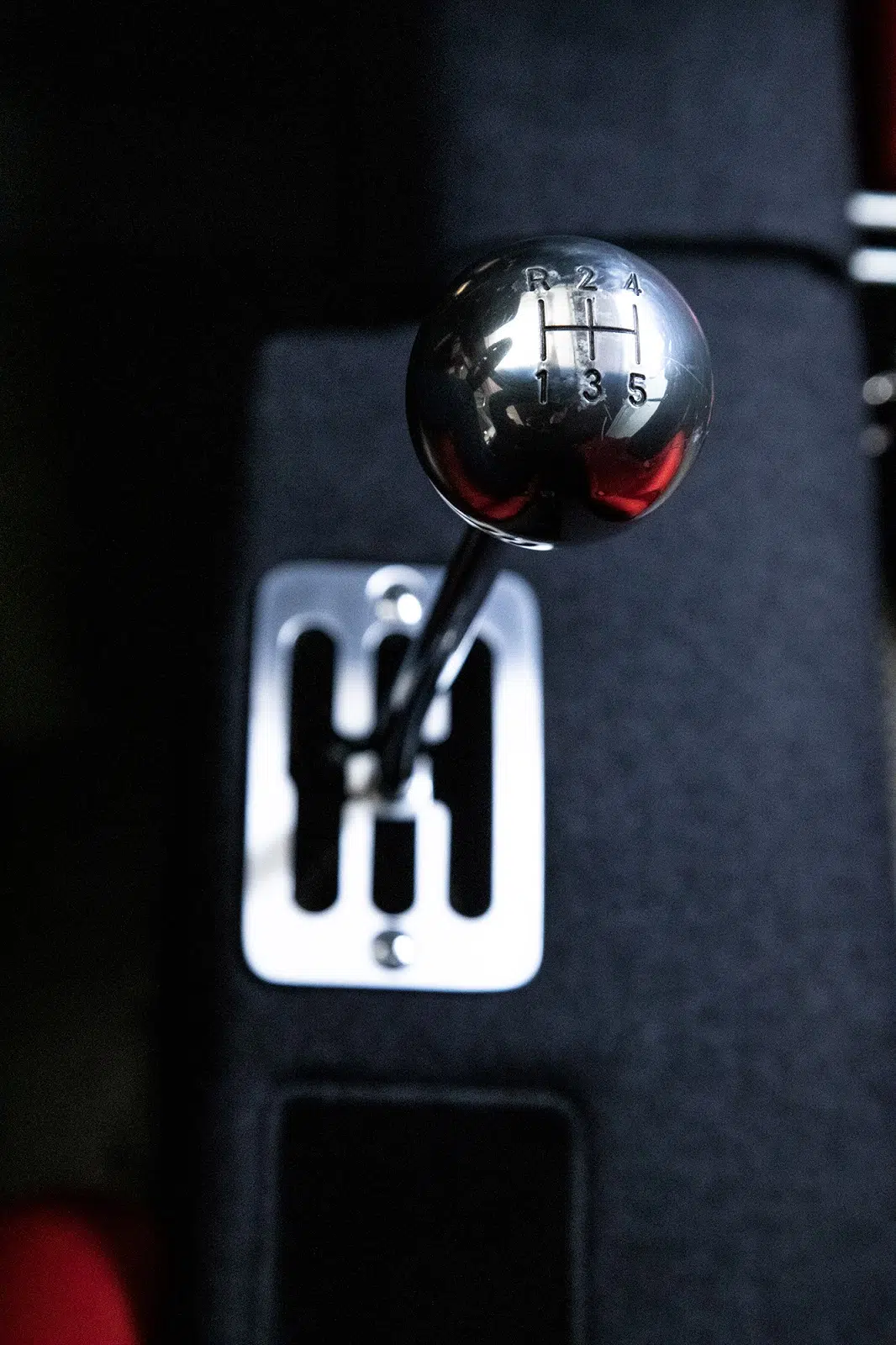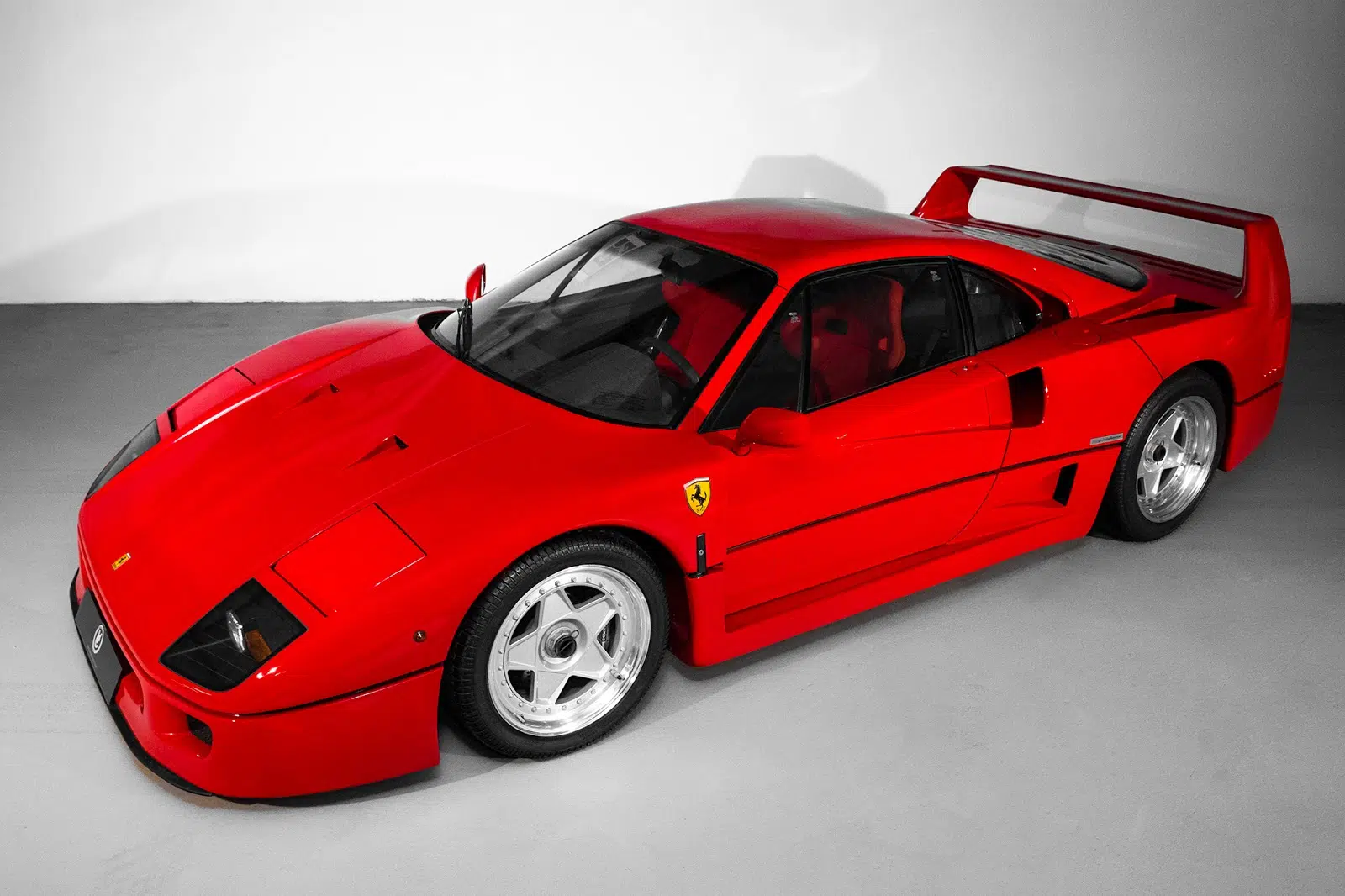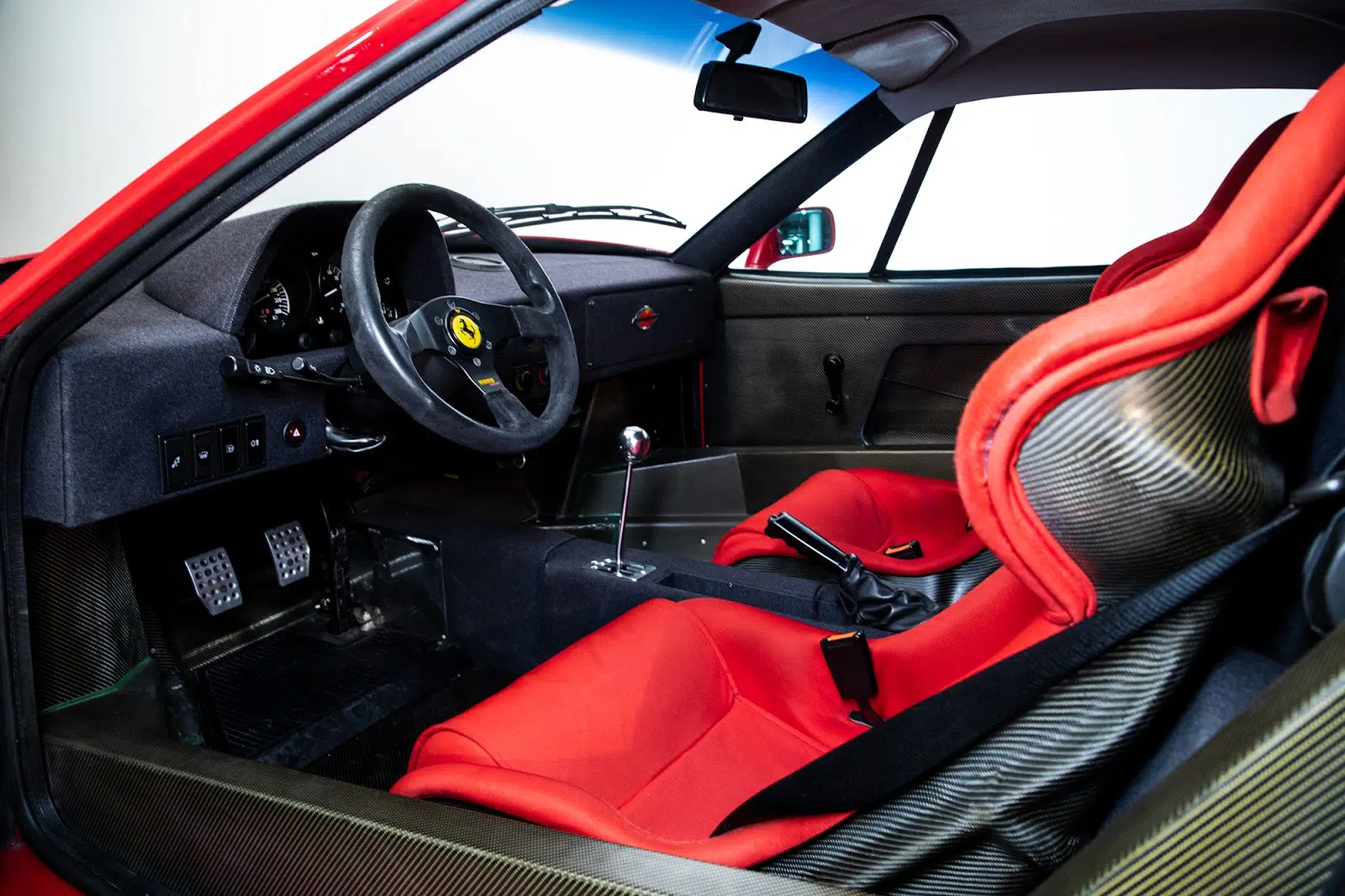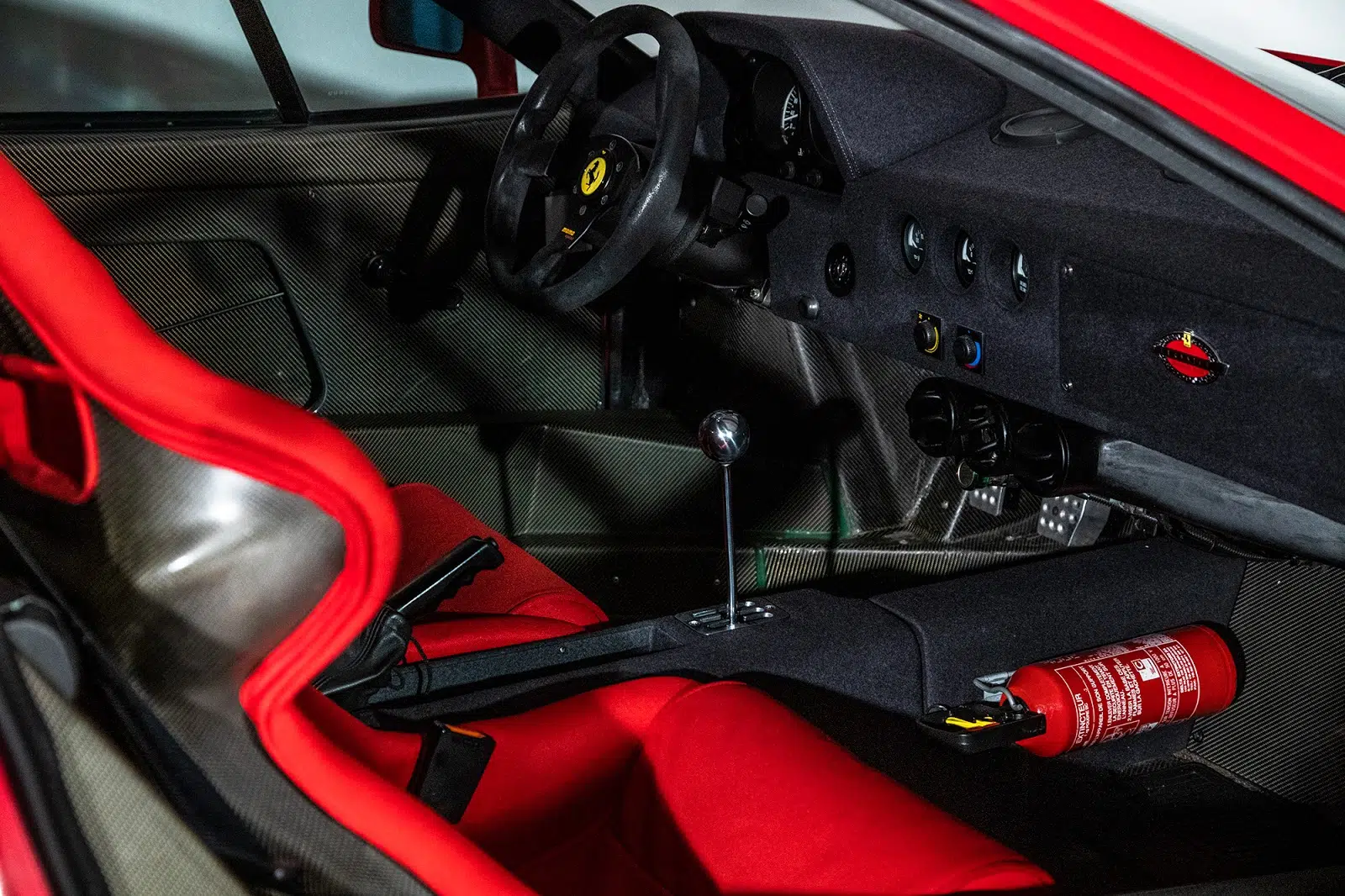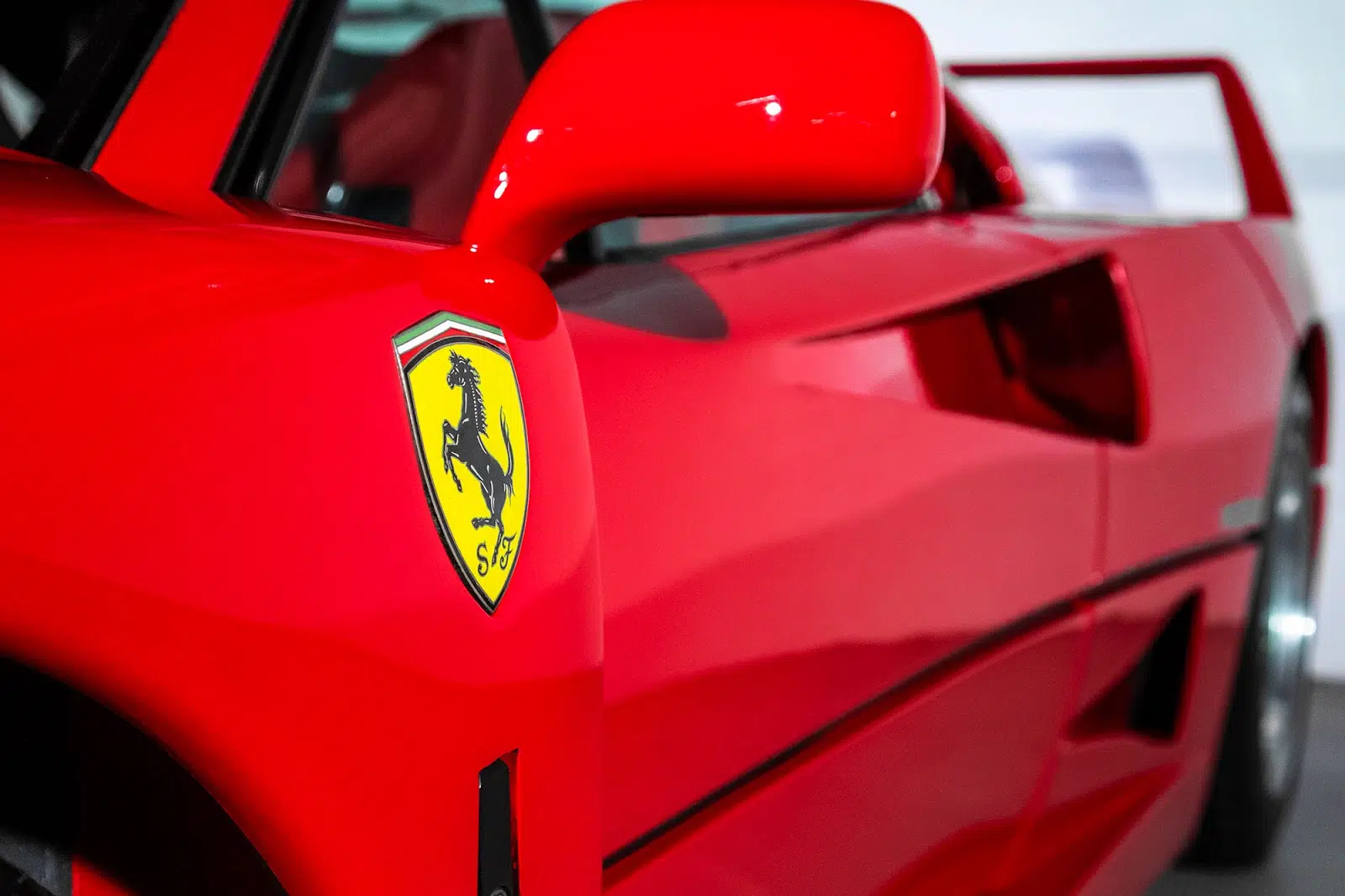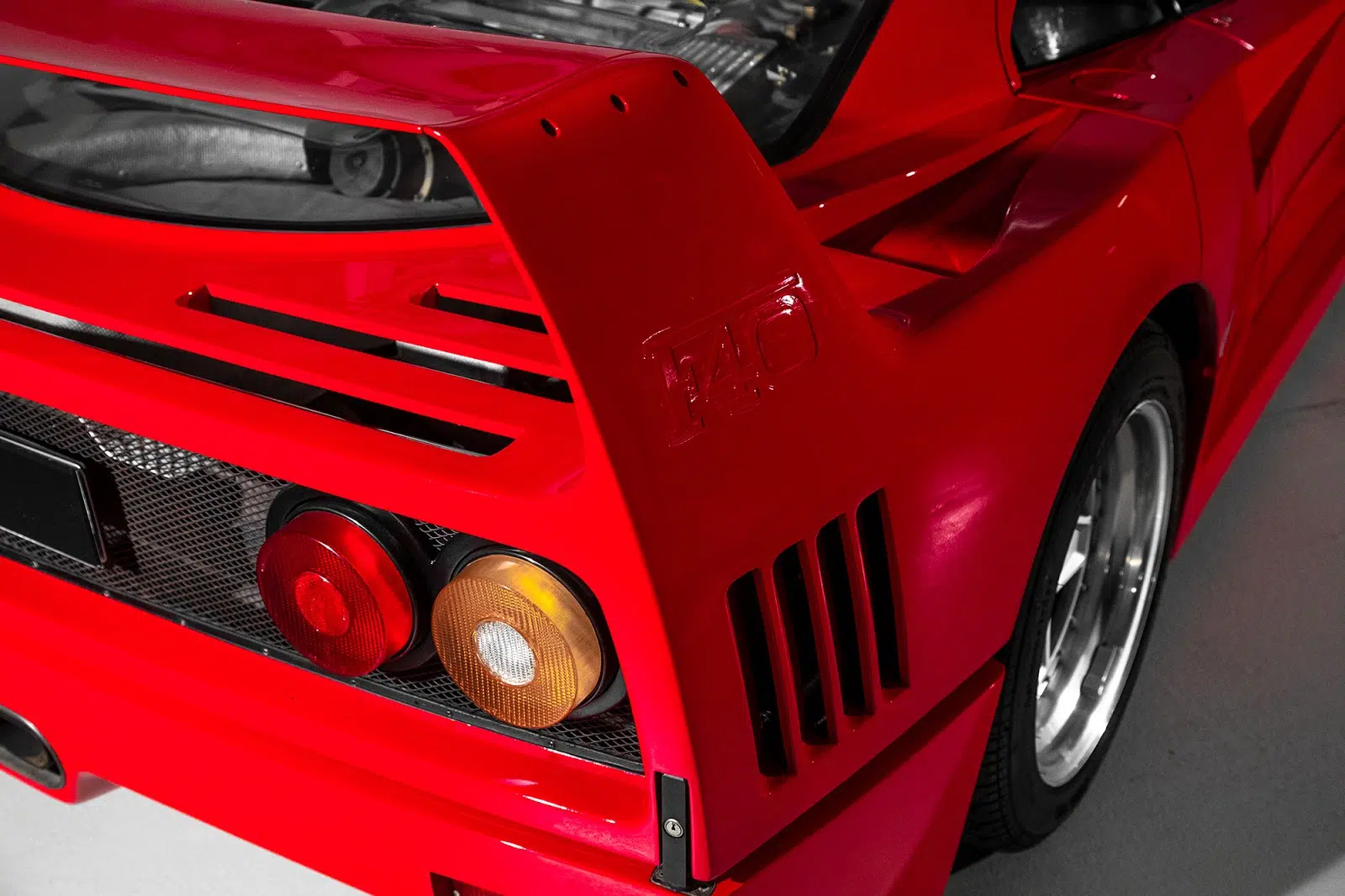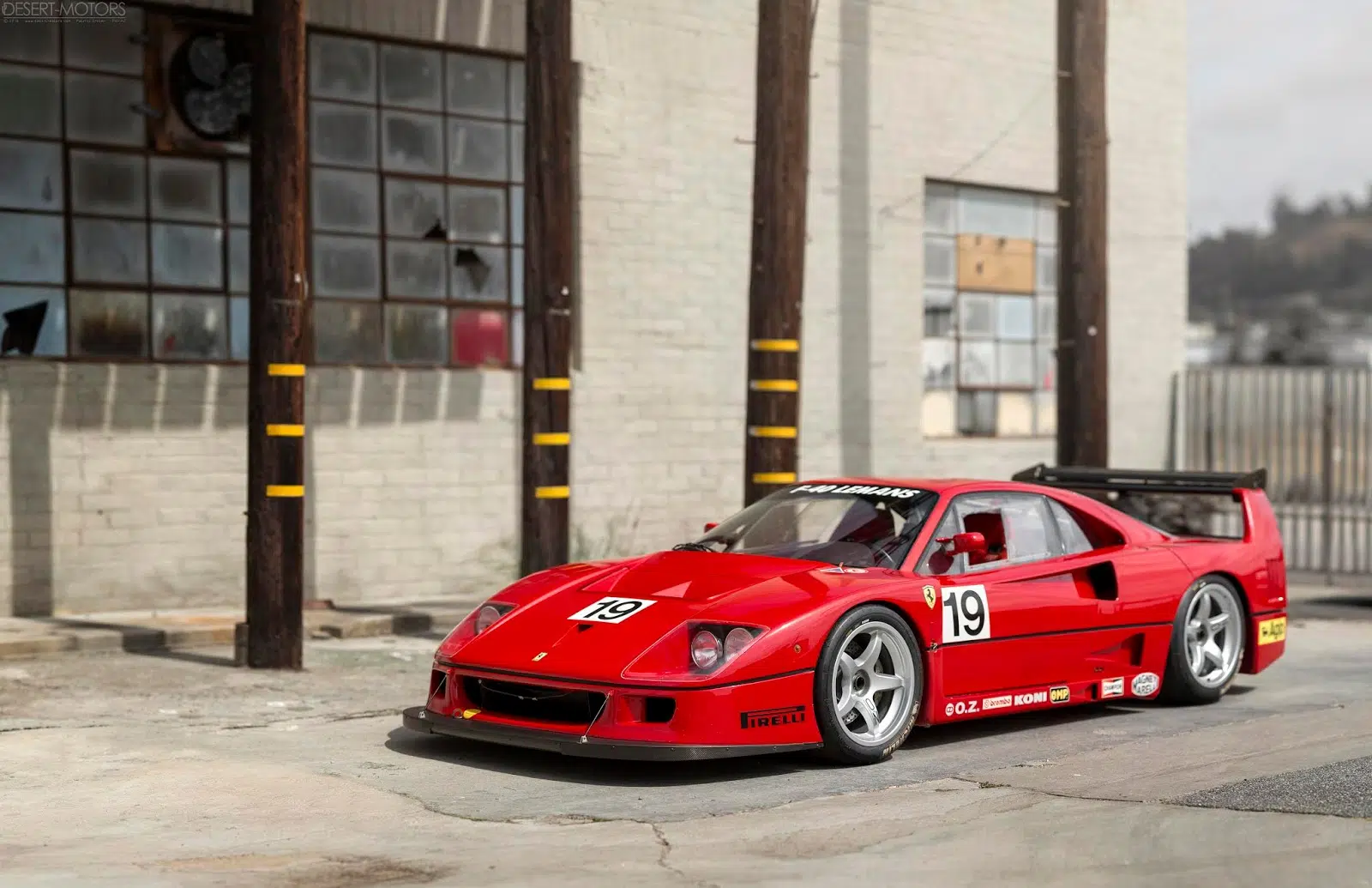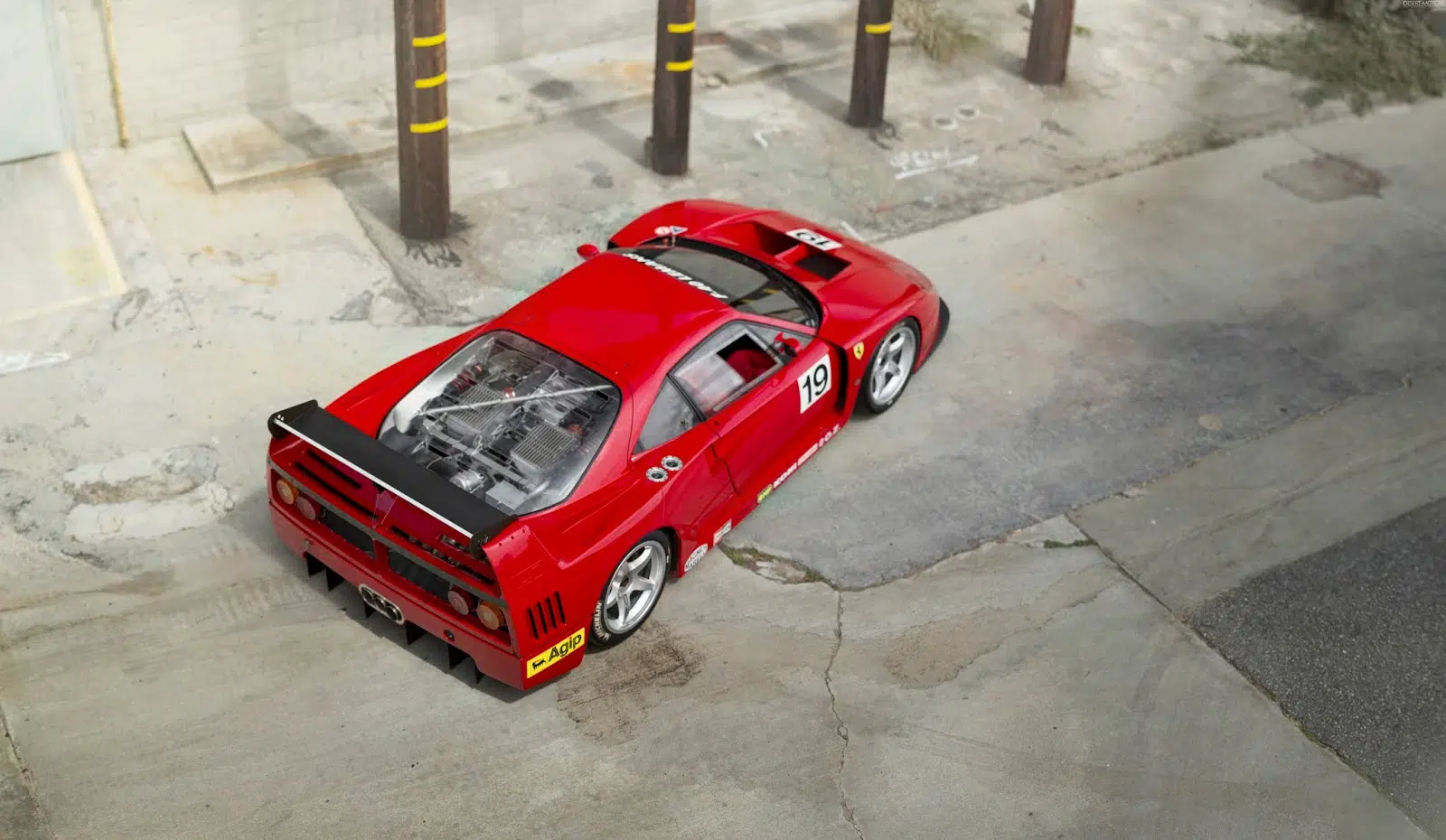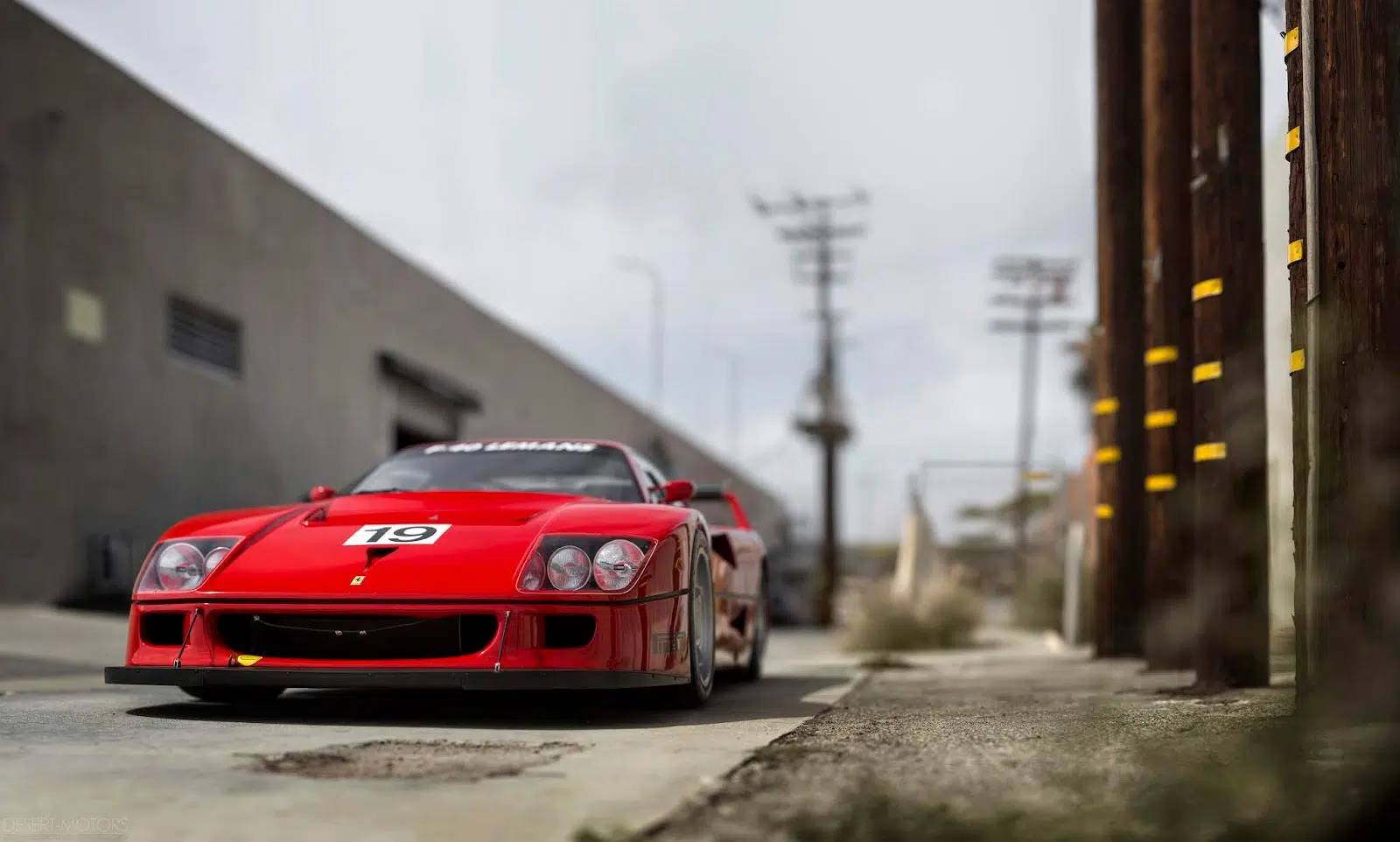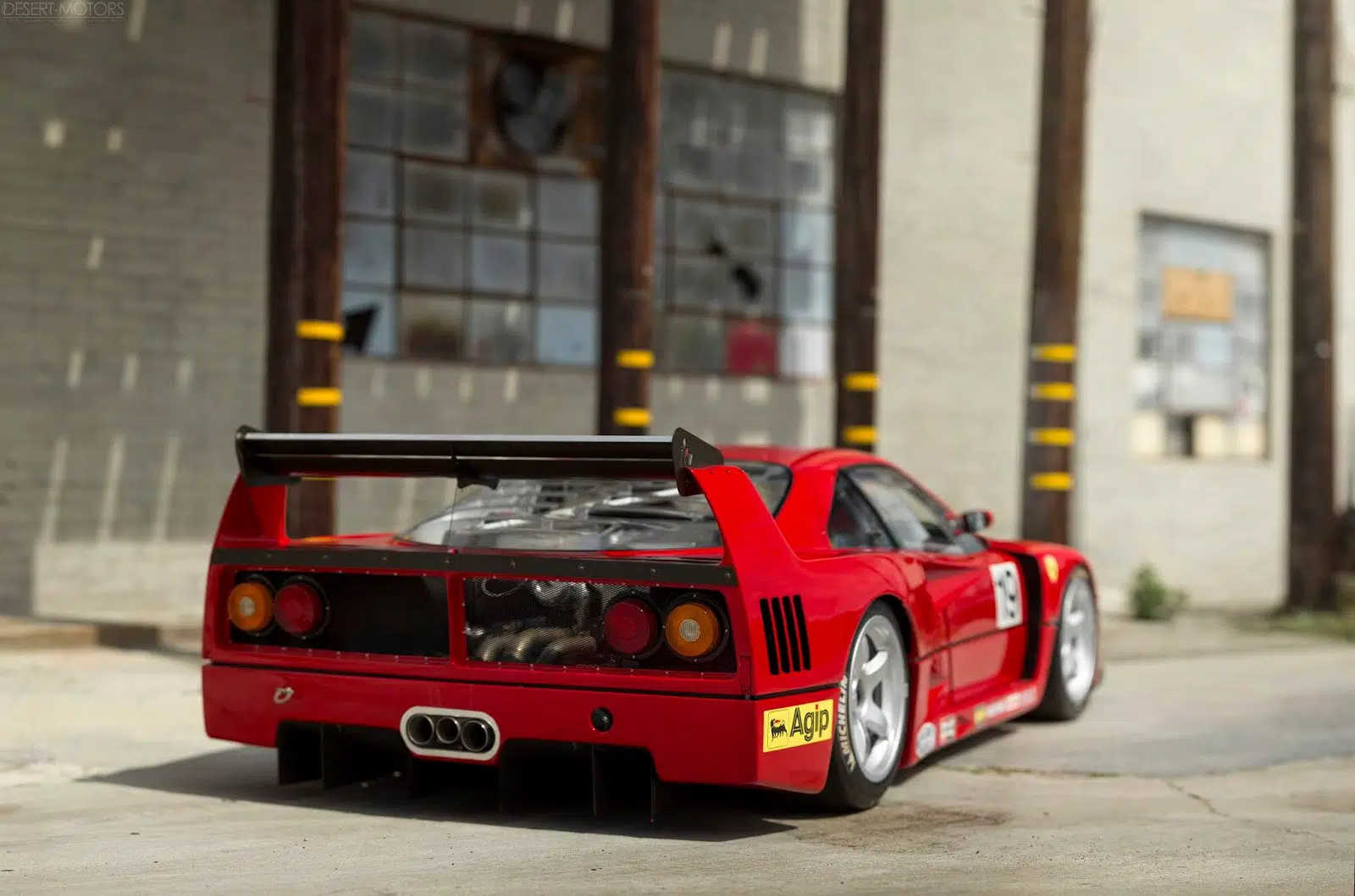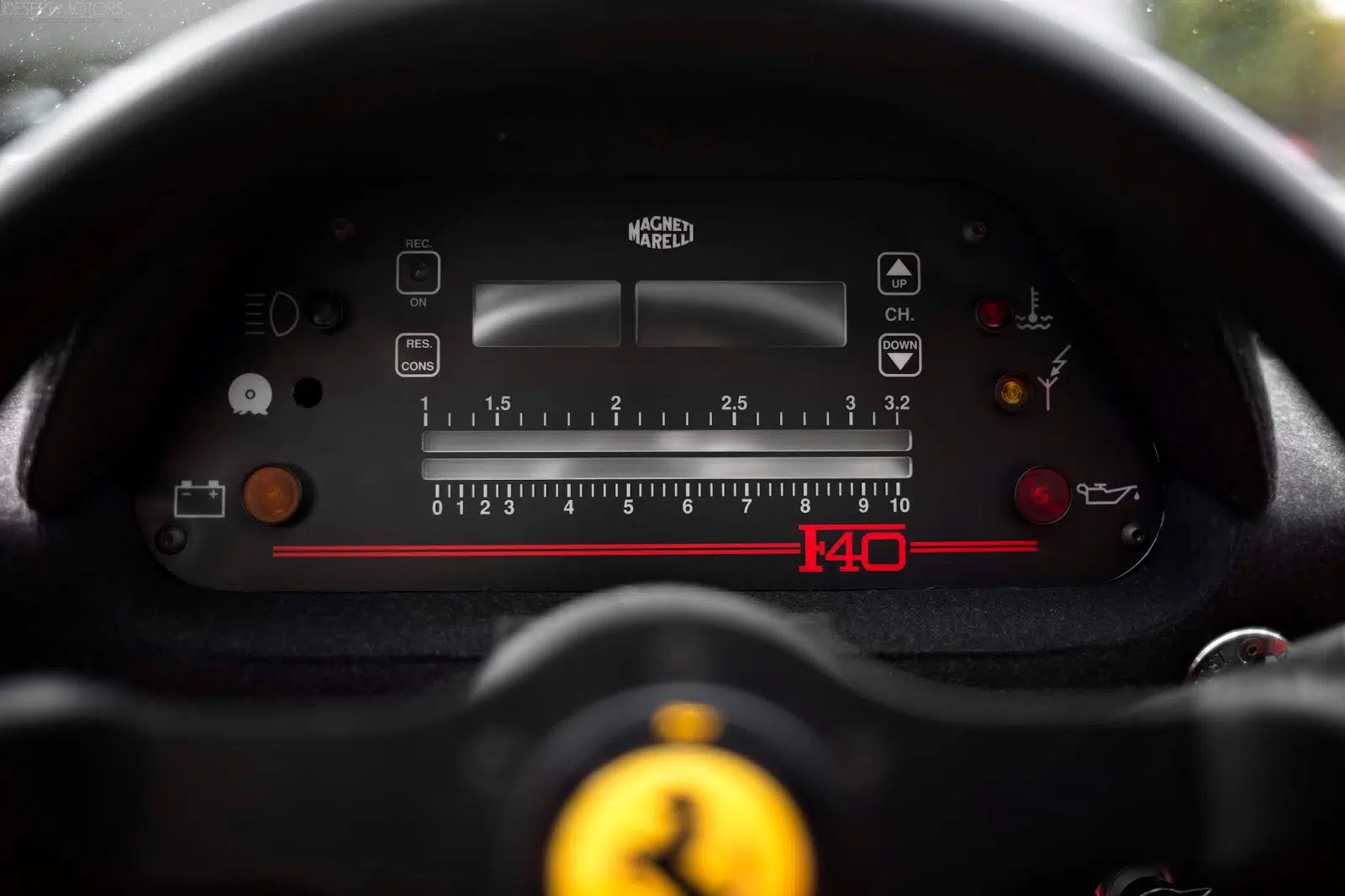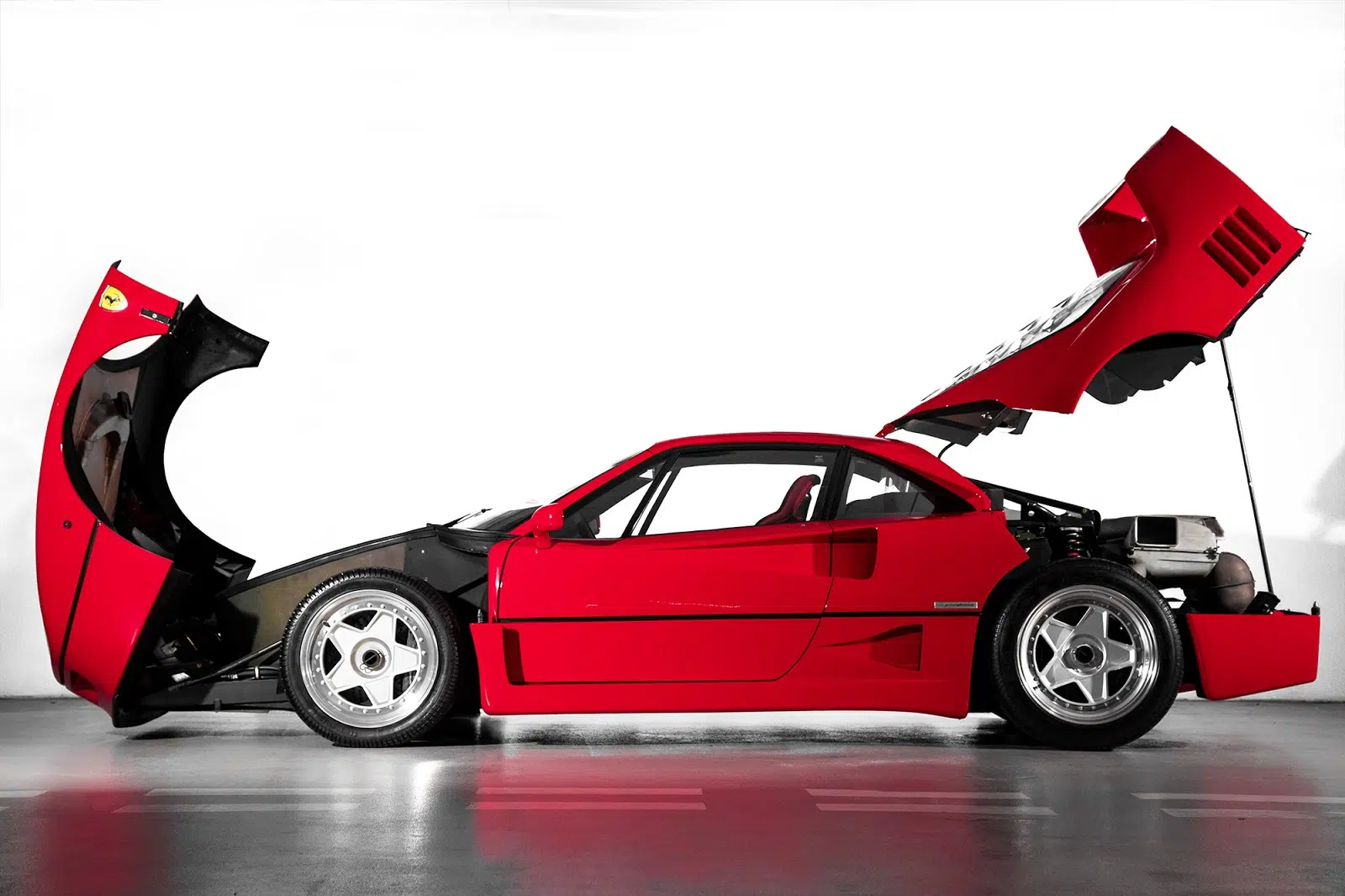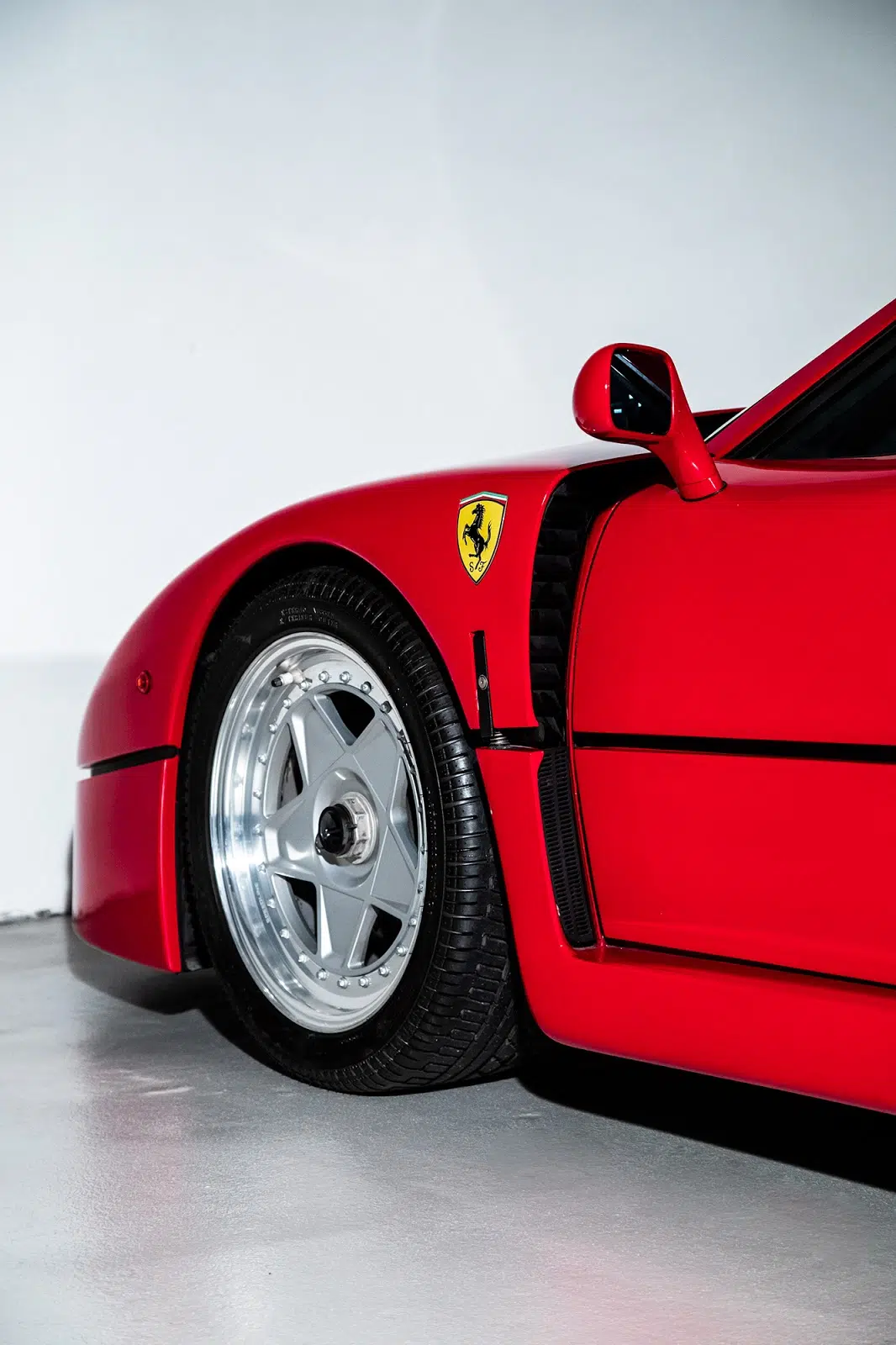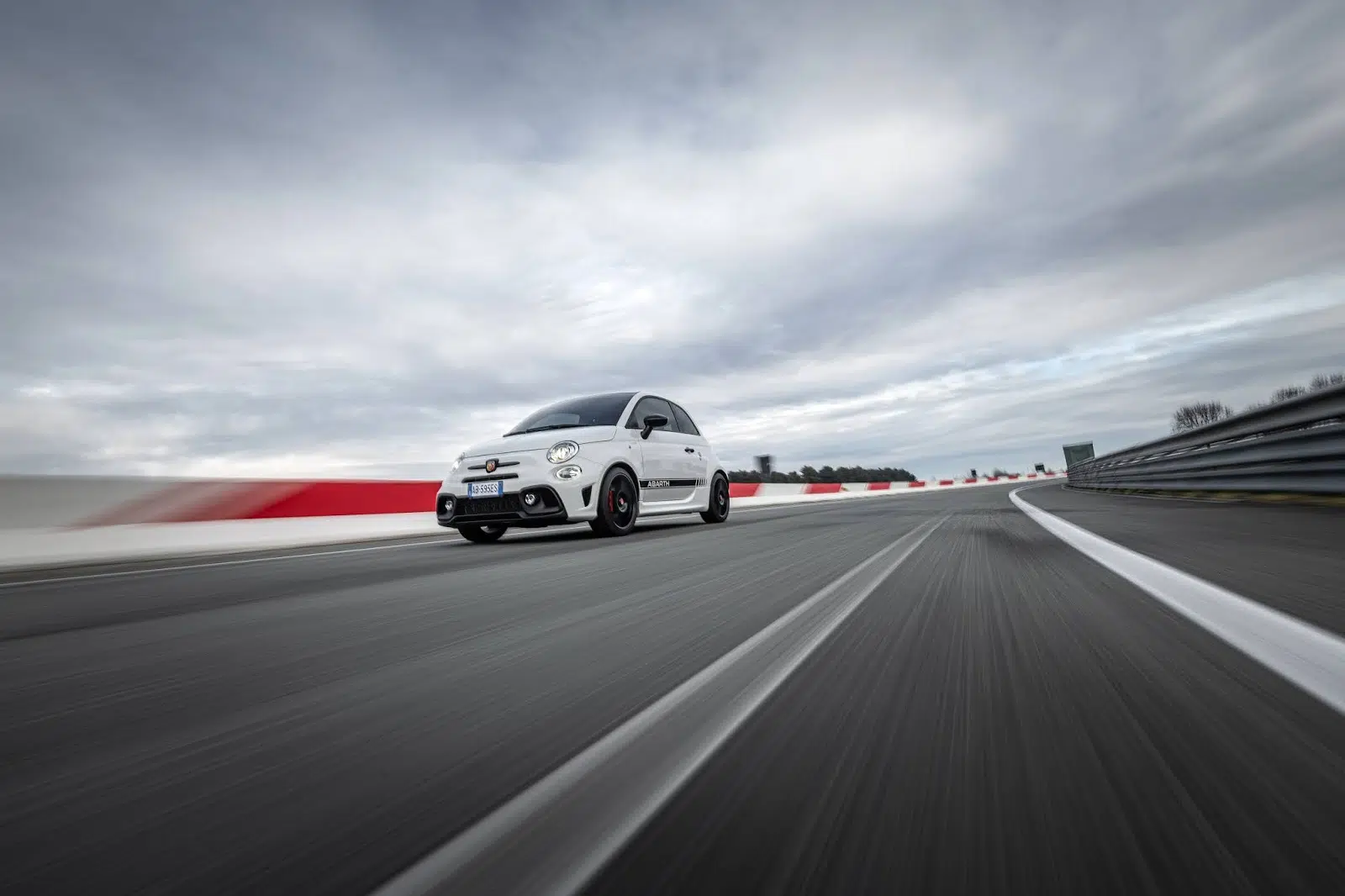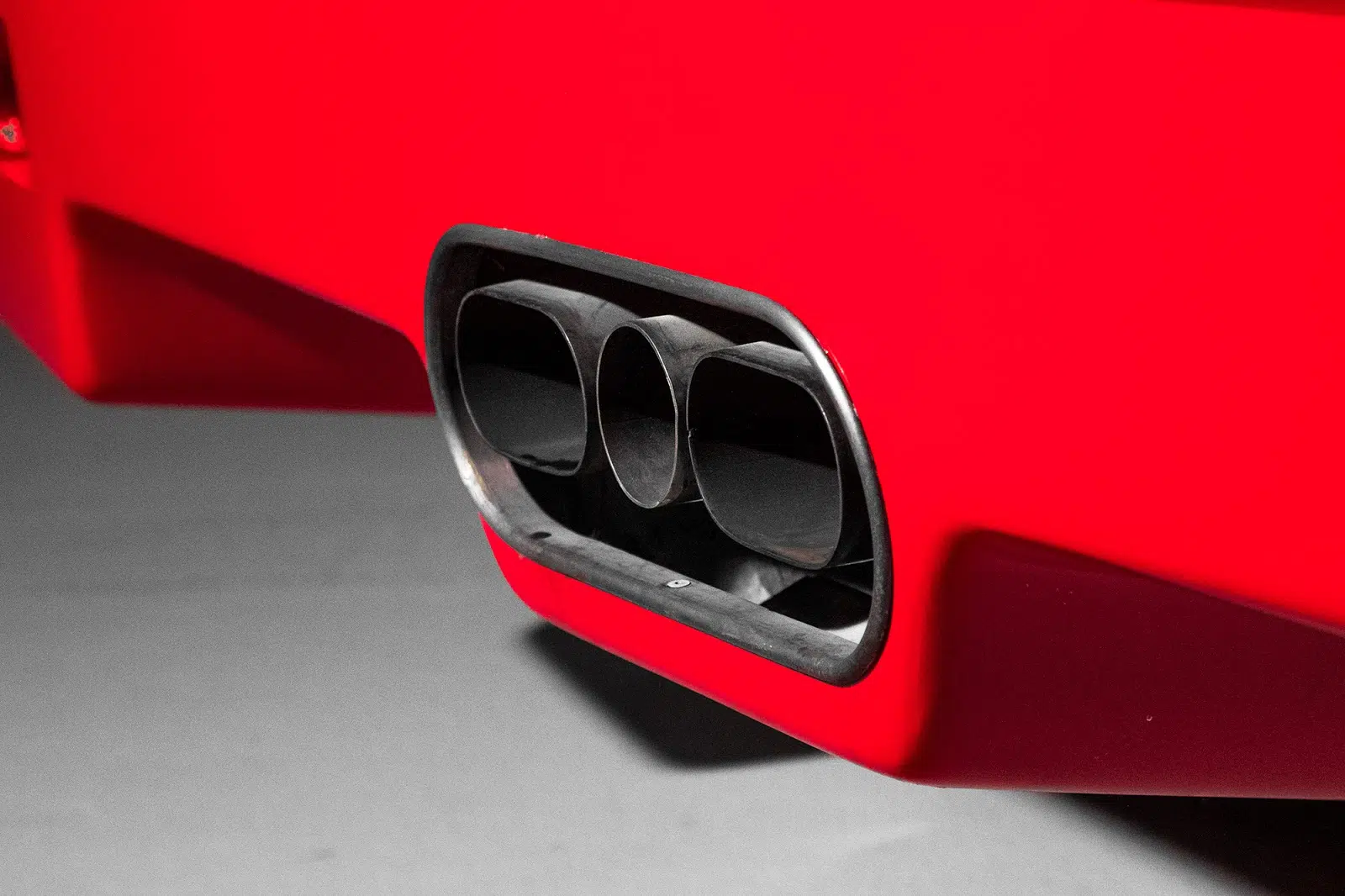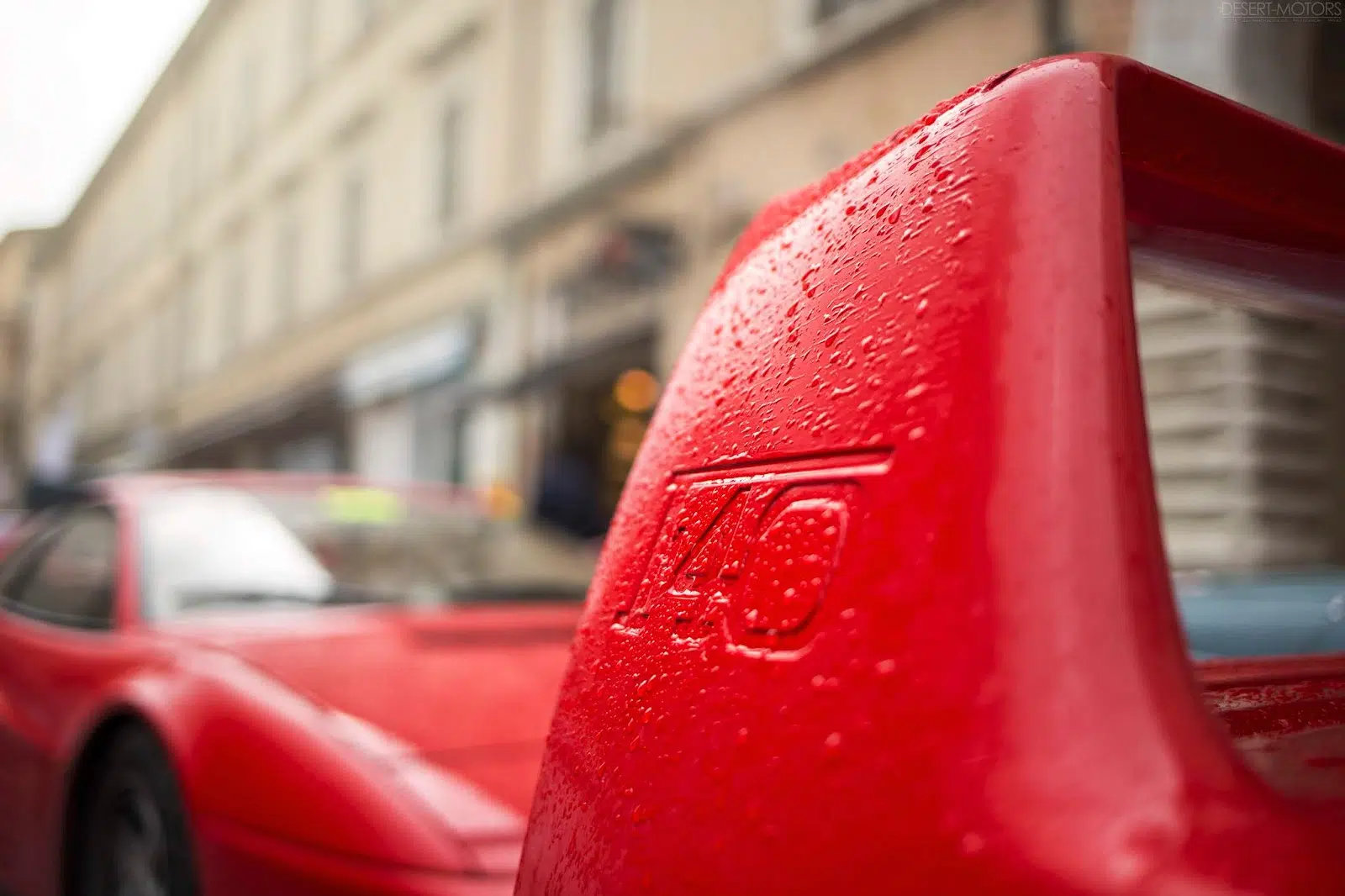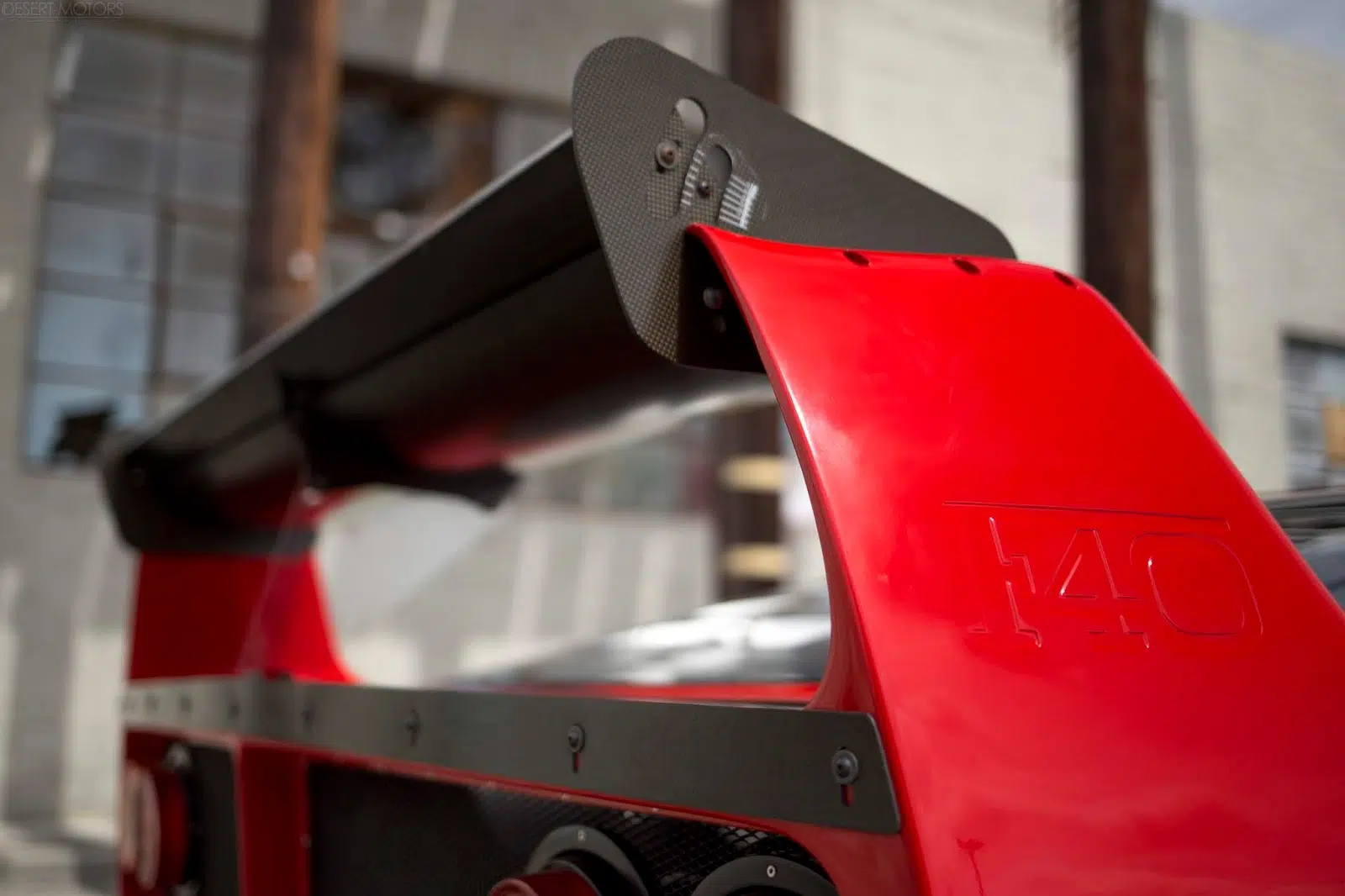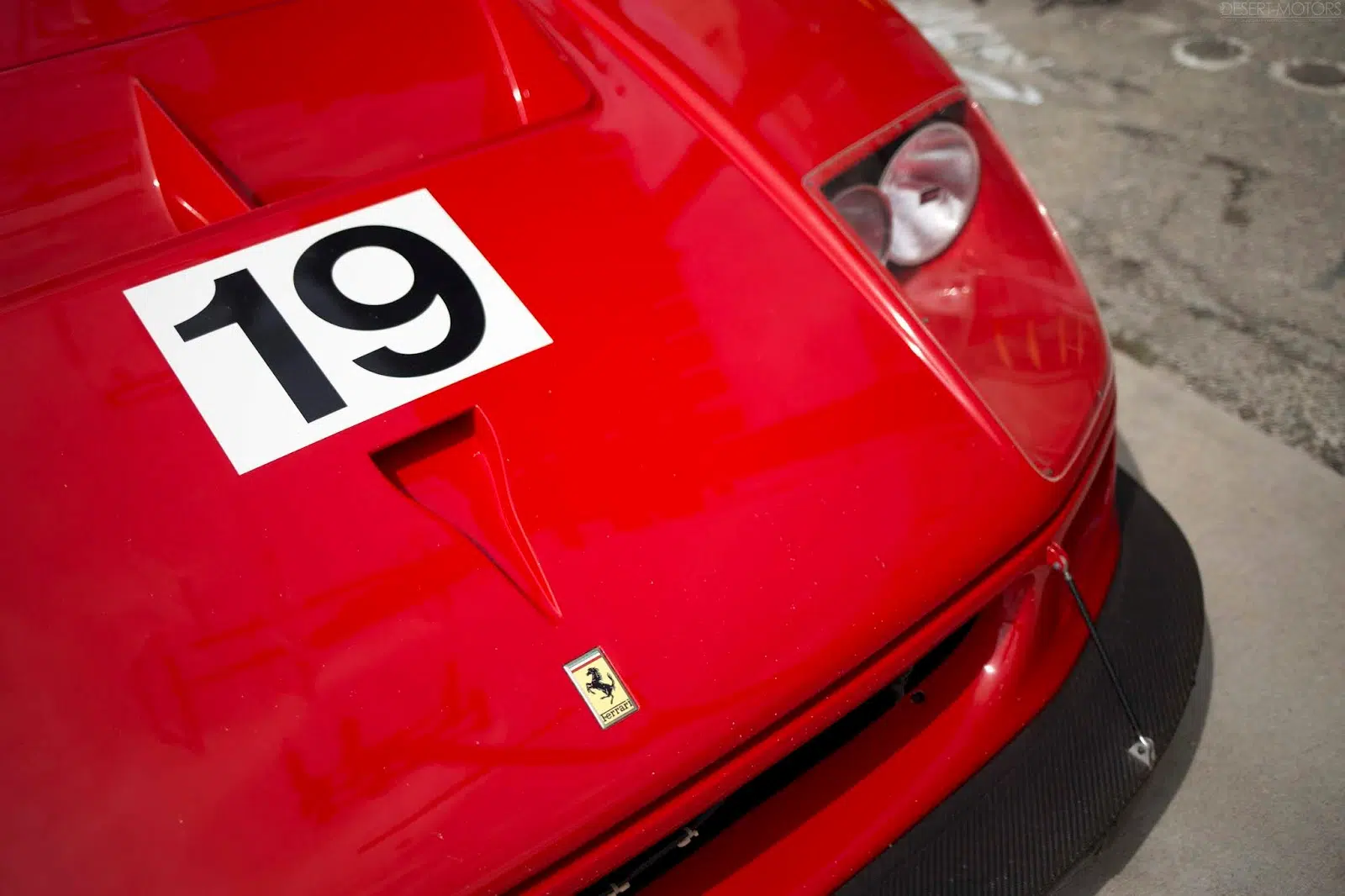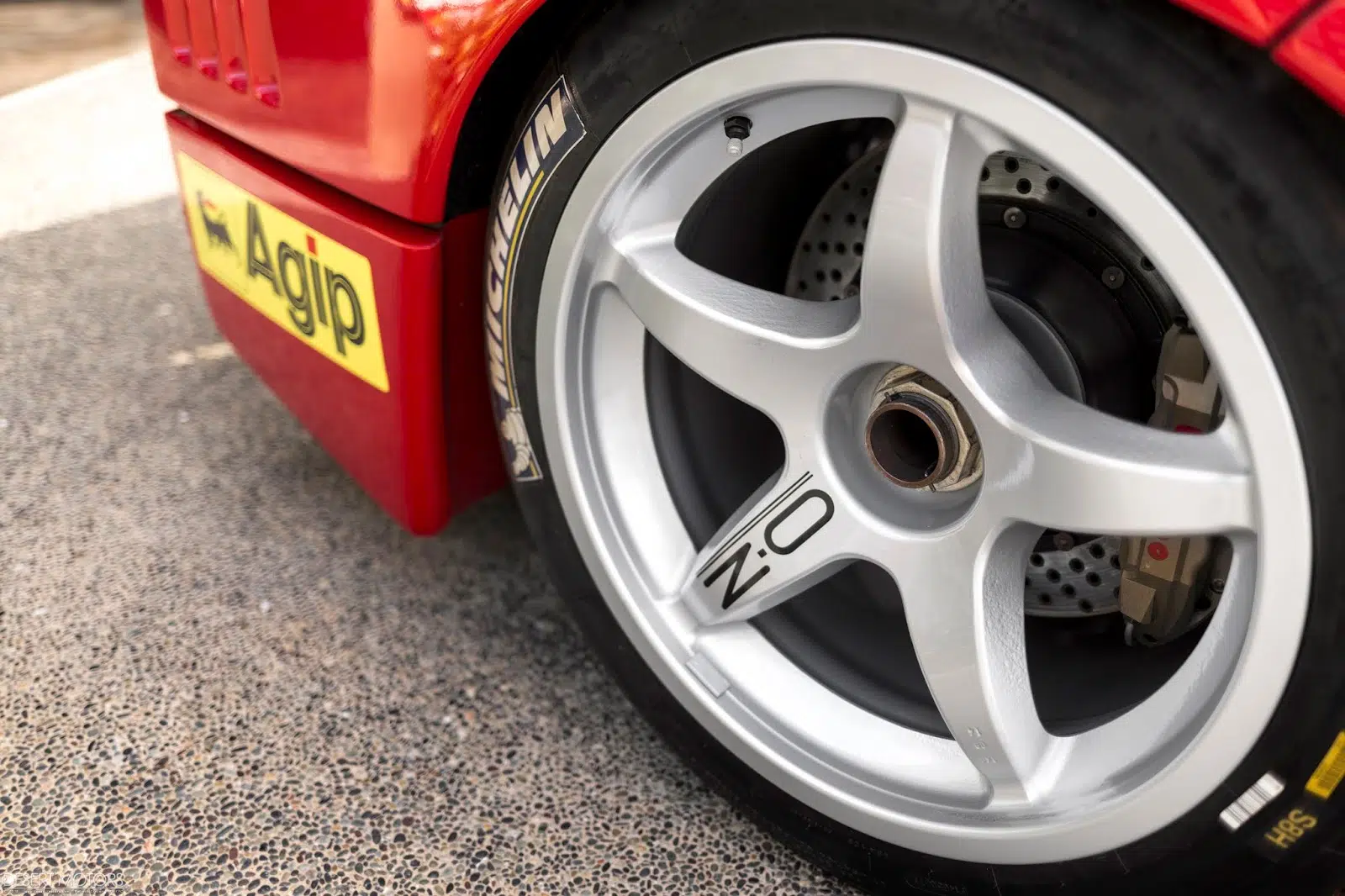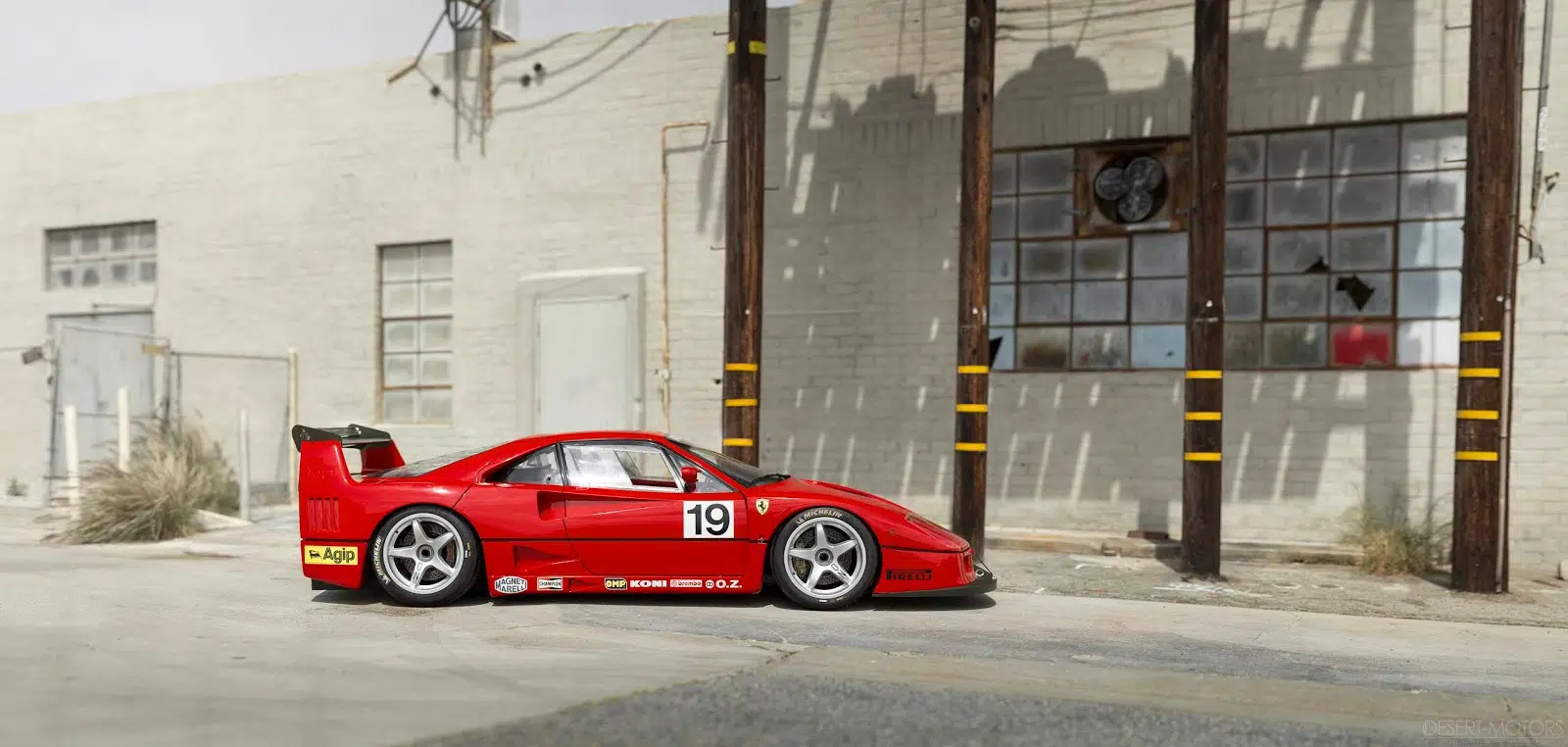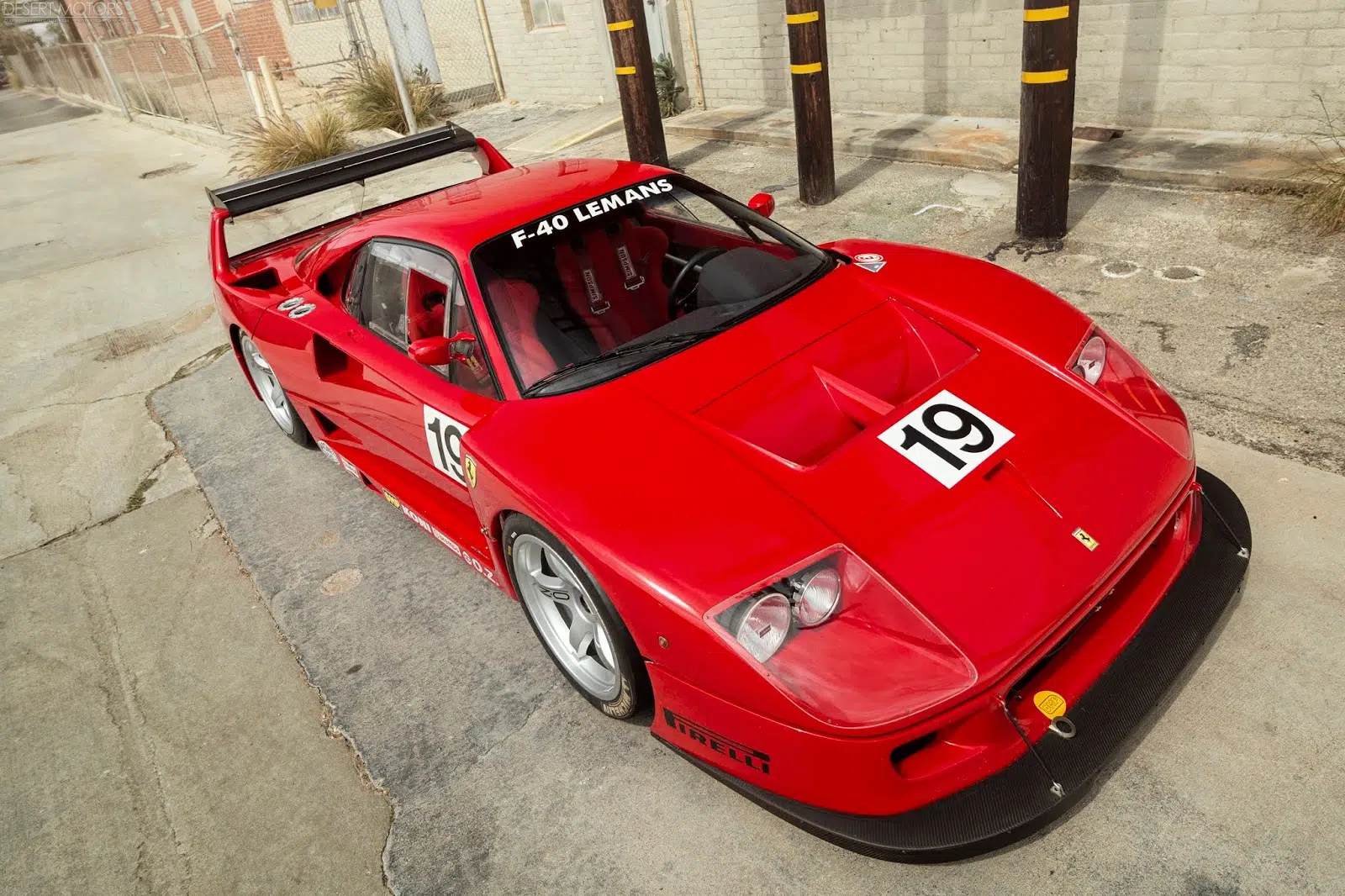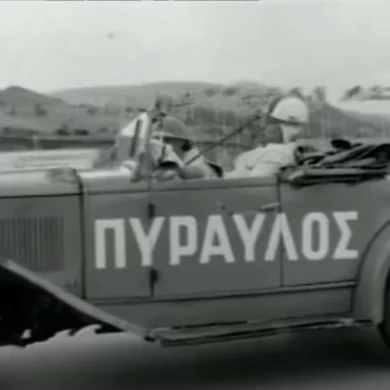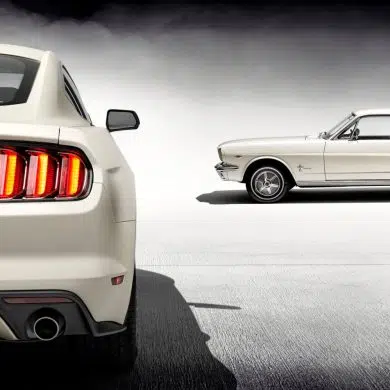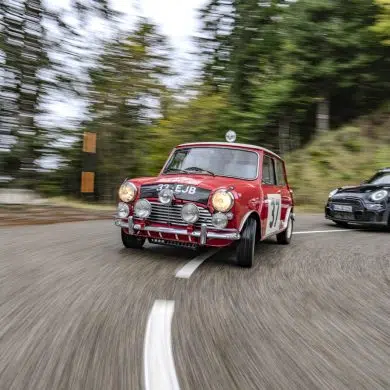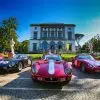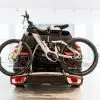TopSpeed Retro Car Sunday - Chapter : Ferrari F40
After the Ferrari 288 GTO, followed by the second of the five members of Ferrari's "Big 5", the legendary F40. The F40 was much leaner than the 288, with the sole criterion being the best possible driving experience. Without many comforts and luxuries. It was the closest thing to a race car on the road, with the only addition being air conditioning. It was also the company's last model to be developed and given the final OK by Enzo Ferrari himself.
Evolution
The birth of the original idea
From 1984, the Ferrari racing team had started to develop the 288 GTO Evoluzione, which was to take part in the FIA Group B championship, but this was cancelled in 1986 after some serious accidents. Ferrari found itself with 5 288 GTO Evoluzione's and no championship to run in. Enzo, however, wanted to create one last car as a tribute to himself, as he was already old. So he continued the Evoluzione project, from which the F40 was born.
The F40 is essentially a 288 GTO Evoluzione, adapted to a road car. This was why, at the time, some people said it was a cynical and speculative move on Ferrari's part, as it was a very expensive car that offered nothing terribly innovative or special. In response Ferrari's marketing department had stated "We wanted the F40 to be very, very fast, sporty to the maximum extent, Spartan. Our customers were saying that our cars were becoming too luxurious and comfortable. The F40 is for our most enthusiastic customers, who want nothing but the top of the range. It wasn't created to compete with the 959. It is not a "laboratory" for technological innovation. It's not a Star Wars car like Porsche. And it wasn't created because of it (the 959), it was going to be created anyway."
The body of the F40 was designed by Leonardo Fioravanti and Pietro Camardella of Pininfarina, under the supervision and guidance of Nicola Materazzi, the Ferrari engineer who designed all its mechanical parts, as well as those of the 288 GTO Evoluzione, from which the F40 borrows many design elements.
Engine, transmission and suspension
The F40 is fitted with a supercharged version of the 288 GTO's twin-turbo V8, with a capacity of 2.9 litres and an output of 478bhp at 7000rpm and 577Nm of torque at 4000rpm. Its gearbox is a 5-speed manual. It is worth noting that the gearbox's staging, torque curves and overall engine performance varies from car to car. Until 1990, no F40 was fitted with catalytic converters until the US made them compulsory and since then, they have all been fitted, regardless of the market for which they were intended.
Their characteristic exhaust, with 3 outlets, uses the two outer ones for the exhaust gases (the left one for the left part of the V and the right one for the right), while the middle one is for the exhaust gases from the wastegate.
The suspension system was similar to that of the 288's twin swingarms, but improvements were made to all individual components. Due to its very low height from the road, some of the later models provided the possibility of a slight increase in height, changing some suspension settings when necessary.
Exterior and interior
The body of the F40 was entirely new, made of Kevlar, carbon fibre and aluminium, to maximise torsional stiffness and keep the weight as low as possible. The windows and engine cover are made of polycarbonate plastic, also to keep the weight as low as possible.
Apart from a rudimentary air conditioning system, the cars had nothing else. No carpeting, no sound system, no panels on the doors, no trace of leather upholstery, no passenger glove box. The first 50 had sliding windows, like the race cars, while the rest had regular windows.
Aerodynamics
Little of its supercharged V8, in the F40 cooling was very important. Its design is likened to an open-wheel racing car, which has a body on top. The bottom of the car is partially covered at the front to stabilise the airflow from below, but it is open at the rear to allow some of the air to enter the engine compartment to provide the necessary cooling.
Games
LM
The F40 entered the track in 1989, where it participated in the Laguna Seca race in the IMSA event, in the GTO category, with Jean Alesi finishing third, behind the two four-wheel drive Audi 90s (with the spaceframe, which was very common as a chassis in racing cars at the time). In the next race, however, he was forced to retire after 18 laps.
The following season, with Jean-Pierre Jabouille, Jacques Laffite and Hurley Haywood as drivers, three second places and a third in the same event.
Although the F40 would not race in this championship again in later years, many privateers participated in a variety of events in the GT class with it. In 1994, the LM, made its debut in international events, with a race car participating in the BPR Global GT Series by Strandell, winning the " 4 Hours of Vallelunga" race.
In 1995, the number of LM racers rose to 4, developed independently by Pilot-Aldix Racing (F40 LM) and Strandell (F40 GTE, racing under the Ferrari Club Italia banner), winning the "4 Hours of Anderstorp". No longer competitive against the newcomer McLaren F1 GTR, the F40 returned for a final season in 1996, again winning the Anderstorp race, but has not competed in a GT Class event since.
In total, 19 F40 LMs were built, with an output of 800 hp.
Competizione
The F40 Competizione, was a more powerful (non-sponsored) F40 LM, with a power output of 600 hp and a top speed of 367 km/h. The Competizione was built in 10 examples, 2 coming from LM specs (which Ferrari then changed as they felt it limited the F40) and 8 under the F40 Competizione designation. It was the result of a customer's request, following a 1 of 1 race car order from Ferrari's French importer, in which they wanted to participate in the 24 Hours of Le Mans.
Performance
The first independent measurements were made by the French magazine, Sport Auto, in September 1988, with measurements showing that 0-100 is achieved in 4.7 seconds and the top speed is 321 km/h.
The next opportunity to measure the top speed came when the German Auto, Motor und Sport, did the top speed shootout on the Nardo Ring. Ferrari sent two F40s, but neither could exceed 321km/h. The Porsche 959 S that participated recorded 339 km/h, while the Ruf CTR recorded 342 km/h.
The Car and Driver and Car, motor and sport in their own tests, they recorded the following measurements:
Car and Driver
- 0-30 mph (48 km/h): 1.8 seconds
- 0-40 mph (64 km/h): 2.5 seconds
- 0-50 mph (80 km/h): 3.6 seconds
- 0-60 mph (97 km/h): 4.2 seconds
- 0-70 mph (113 km/h): 4.9 seconds
- 0-80 mph (129 km/h): 5.7 seconds
- 0-90 mph (145 km/h): 7.2 seconds
- 0-100 mph (161 km/h): 8.3 seconds
- 0-110 mph (177 km/h): 9.5 seconds
- 0-120 mph (193 km/h): 11.0 seconds
- 0-130 mph (209 km/h): 13.5 seconds
- 0-140 mph (225 km/h): 15.6 seconds
- 0-150 mph (241 km/h): 18.0 seconds
- 0-160 mph (257 km/h): 21.3 seconds
- 0-170 mph (274 km/h): 26.3 seconds
- 30 mph (48 km/h)-50 mph (80 km/h): 12.1 seconds, using 5th gear (~1,968 rpm at 50 mph)
- 50 mph (80 km/h)-70 mph (113 km/h): 12.2 seconds, using 5th gear
- Standing1⁄4 mile (402 m): 12.1 seconds at 122 mph (196 km/h)
- Braking 70–0 mph: 218 ft (113–0 km/h: 66 m)
- Observed fuel economy: 9 miles per US gallon (26 L/100 km)
- Top speed: 197 mph (317 km/h)
Car, motor and sport
- 0-80 km/h (50 mph): 3.8 seconds
- 0-100 km/h (62 mph): 4.6 seconds
- 0-120 km/h (75 mph): 5.6 seconds
- 0-160 km/h (99 mph): 8.1 seconds
- 0-180 km/h (112 mph): 9.3 seconds
- 0-200 km/h (124 mph): 11.0 seconds
- Top speed: 321 km/h (199 mph)
All in all
H F40 είναι κατά πολλούς, η κορυφαία Ferrari μέχρι σήμερα.
Έχει σίγουρα ένα δικό της μύθο, καθώς είναι δύσκολη στην οδήγηση, κάπως νευρική τη στιγμή που αρχίζουν τα turbo της να δίνουν την πλήρη ισχύ τους και φυσικά, είναι λιτή σε υπερθετικό βαθμό.
Έπειτα, είναι και το βαρύ κομμάτι ιστορίας που φέρει. Η τελευταία που είχε πάρει το OK απο τον ίδιο τον Enzo Ferrari.
Κάποιοι τη συγκρίνουν με την 288 GTO, λέγοντας πως είναι ανωτερη σαν αυτοκίνητο. Αν το δει κανείς καθαρά ως προς τα νούμερα, ναι, μάλλον είναι. Ωστόσο, δεν πρόκειται για αντικειμενική σύγκριση, καθώς είναι ένα GT εναντίον ενός street legal αγωνιστικού. Κάπως άτοπη σύγκριση.
Ως προς την 959, είναι το πιο “καθαρόαιμο” απο τα δύο. Όπως είπε και η ίδια η Ferrari, ναι, δεν είναι κανένα τεχνολογικό θαύμα ή δεν έχει κάποια τρελή καινοτομία, αλλά δεν κατασκευάστηκε ποτέ με αυτό το στόχο.
Έχοντας δει μόνο μερικές απο κοντά και έχοντας διαβάσει αρκετά γύρω απο το συγκεκριμένο αυτοκίνητο, δεν θεωρώ πως είμαι σε θέση να τη κρίνω προσωπικά. Πιστεύω πάντως πως είναι μία μοναδική οδηγική εμπειρία, που θα αφήσει κάθε petrolhead με ανοιχτό το στόμα…
Photo Credit : F40 (Manos Kountouris – Veloce Classic and Sports Cars), F40 LM (Patrick Ernzen – Desert Motors, Flickr)


